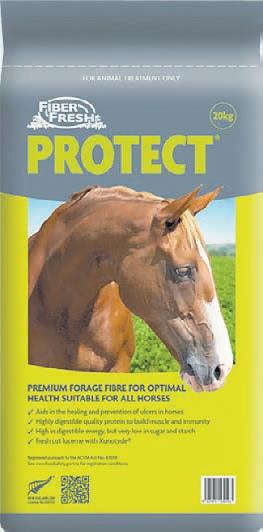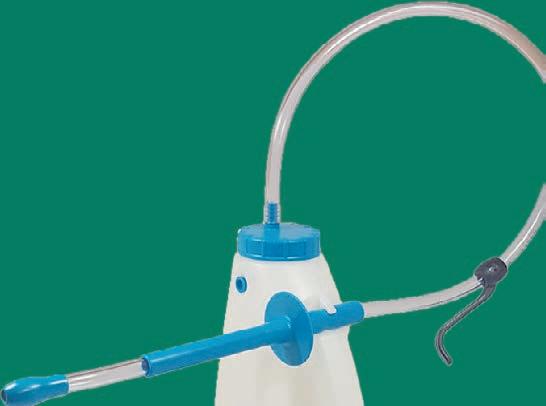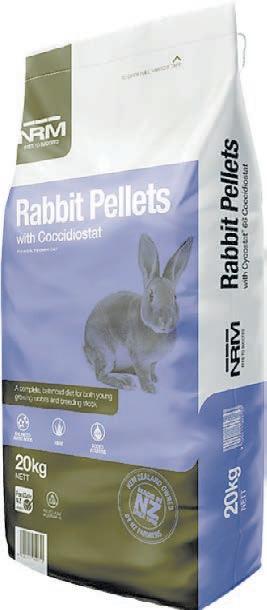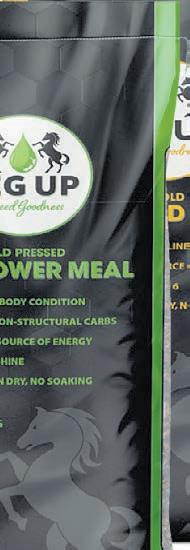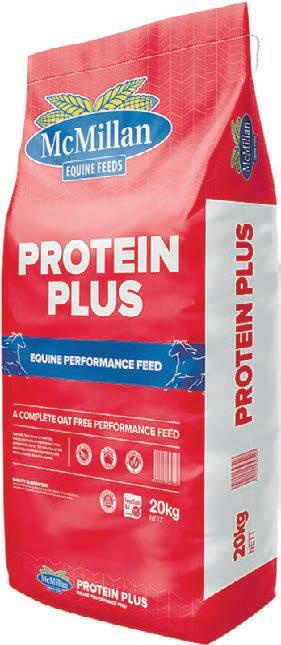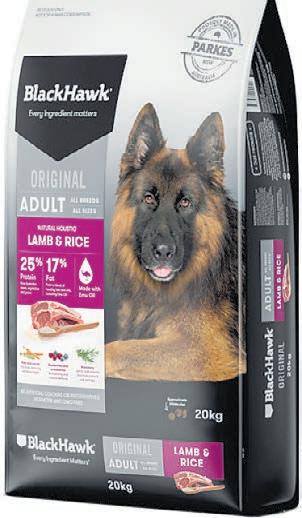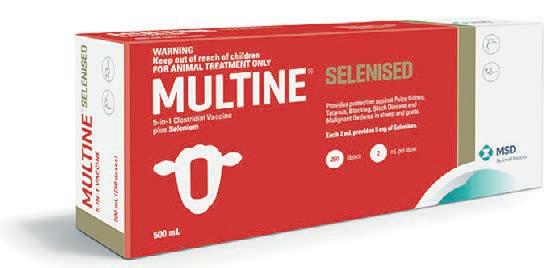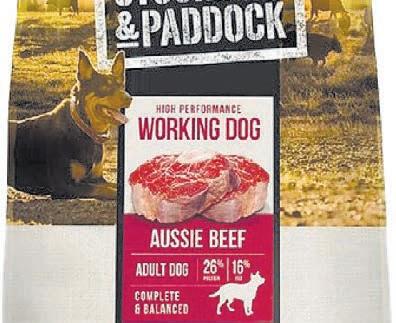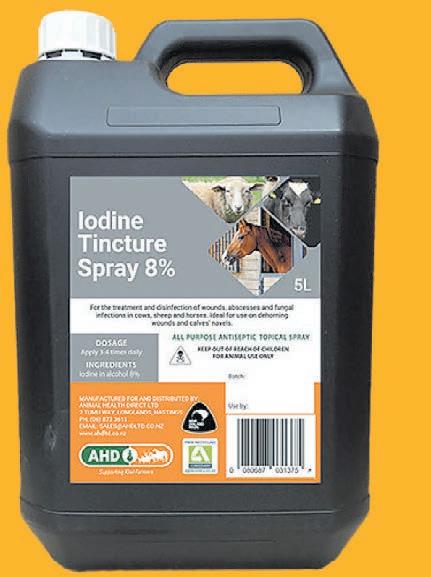







FARMERS and transport companies in the lower North Island are hundreds of thousands of dollars out of pocket following the liquidation of Whanganui-based meat processor Waimarie Meats Limited.
It was gazetted for liquidation on March 1, though Companies Office records have the liquidators appointed on May 31. A full liquidators’ report is still pending.
Dean Ramsden, whose family farm at Akitio east of Dannevirke confirmed it is owed almost $200,000 for 104 head of unpaidfor livestock Waimarie purchased in three lots between early December last year and early January this year.
“There has been no sign whatsoever of any payment to come. We posted a statutory demand on May 1 for payment by the end of May, but nothing came of it. We have not yet heard anything from the liquidator about the full amount owing,” he said.
The lack of payment has set the family farm business up for a dire winter in a district that has been sorely short of moisture and feed.
“It has put our farming company
at risk, we have gone into overdraft at interest rates of 10%.
“We have not been able to put on the usual amount of fertiliser and are going into winter short of feed.”
He said they were forced to quit weaners and in-lamb ewes this month in order to generate some cash for winter.
“We have never had to sell inlamb ewes before.”
Hawke’s Bay farm business
trustee Andrew Field is listed as one of the plaintiffs who sought the Waimarie liquidation. The farm he is a trustee on is owed almost $100,000 relating to stock sales to Waimarie Meats, dating back over six months.
“We have only had silence from Waimarie since then. I believe they have been on the market for over a year and if I had known this, I would not have done business with them.”
For both farmers the company’s failure contains memories of the failure of the Weddel company in 1994. Both had stock caught up in that company’s sudden collapse.
Field estimates there may be as much as another $200,000 owed farmers.
He urged the liquidators to look hard at the timing of key decisions made by the company, including when it was put on the market,
Continued page 3

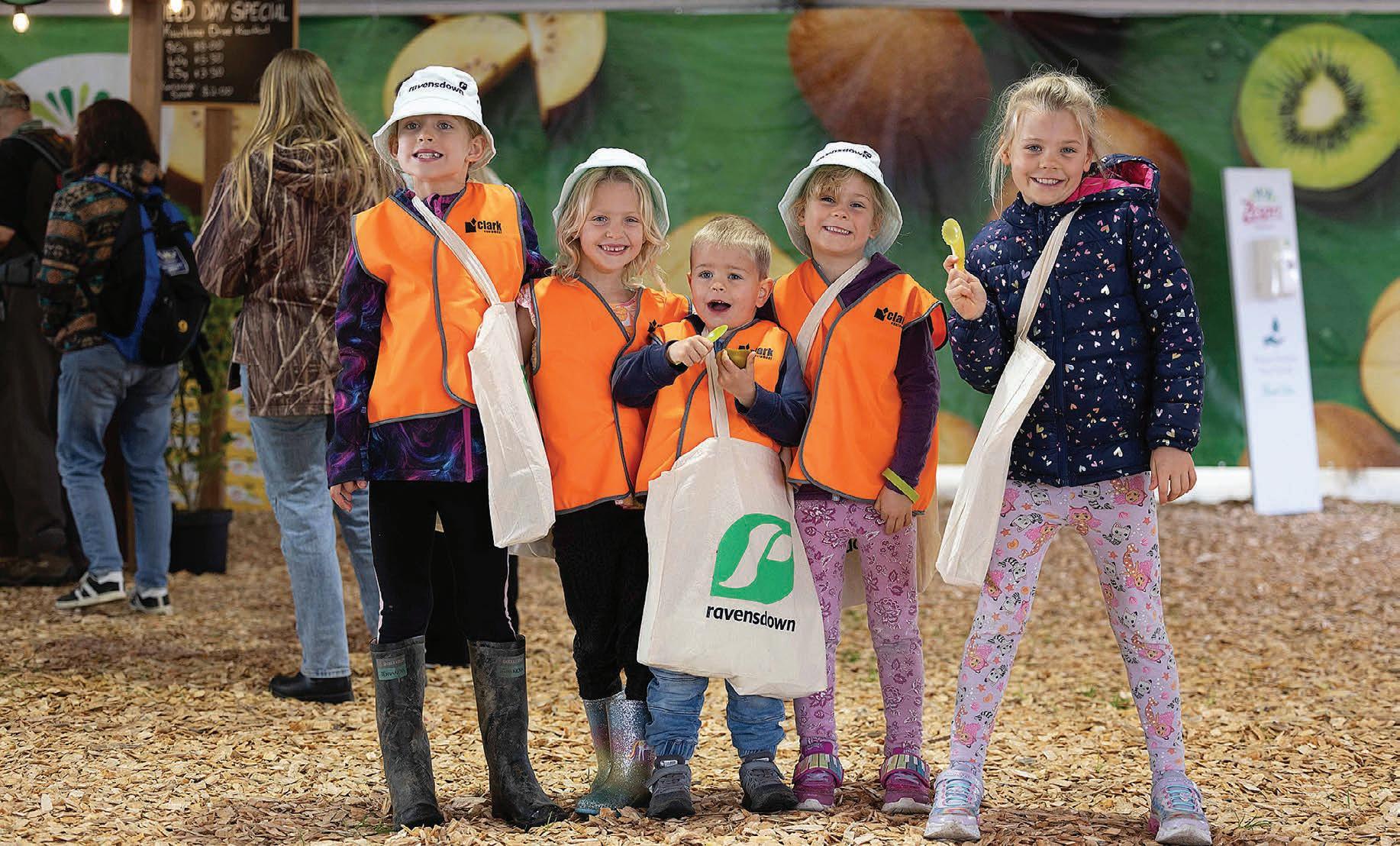
These children enjoyed the tasty treats on offer at the Zespri stand at Fieldays last week when thousands of people descended on Mystery Creek for the annual three-day celebration of the rural sector.
Photo: Jamie Troughton Dscribe Media
MORE 4-5




Large rural lender questions what will emerge from banking inquiry.
NEWS 3
Caroline Mouton felt right at home when she stepped inside a New Zealand seed testing laboratory for the first time.
ARABLE 19-22
Work visa changes could have devastating impact on farming sector.
NEWS 7

Do the people of rural New Zealand have an alcohol abuse problem?
PEOPLE 16
EDITORIAL
Bryan Gibson | 06 323 1519
Managing Editor bryan.gibson@agrihq.co.nz
Craig Page | 03 470 2469 Deputy Editor craig.page@agrihq.co.nz
Claire Robertson
Sub-Editor claire.robertson@agrihq.co.nz
Neal Wallace | 03 474 9240 Journalist neal.wallace@agrihq.co.nz
Gerald Piddock | 027 486 8346 Journalist gerald.piddock@agrihq.co.nz
Annette Scott | 021 908 400 Journalist annette.scott@agrihq.co.nz
Hugh Stringleman | 09 432 8594 Journalist hugh.stringleman@agrihq.co.nz
Richard Rennie | 027 475 4256
Journalist richard.rennie@agrihq.co.nz
Nigel Stirling | 021 136 5570
Journalist nigel.g.stirling@gmail.com
PRODUCTION
Lana Kieselbach | 027 739 4295 production@agrihq.co.nz
ADVERTISING MATERIAL
Supply to: adcopy@agrihq.co.nz
SUBSCRIPTIONS
0800 85 25 80 subs@agrihq.co.nz
PRINTER
Printed by NZME Delivered by Reach Media Ltd
Andy Whitson | 027 626 2269
Sales & Marketing Manager andy.whitson@agrihq.co.nz
Andrew Fraser | 027 706 7877
Auckland/Northland Partnership Manager andrew.fraser@agrihq.co.nz
Jody Anderson | 027 474 6094
Waikato/Bay of Plenty Partnership Manager jody.anderson@agrihq.co.nz
Palak Arora | 027 474 6095
Lower North Island Partnership Manager palak.arora@agrihq.co.nz
Omid Rafyee | 027 474 6091
South Island Partnership Manager omid.rafyee@agrihq.co.nz
Julie Gibson | 06 323 0765 Marketplace Partnership Manager classifieds@agrihq.co.nz
Andrea Mansfield | 027 602 4925 National Livestock Manager livestock@agrihq.co.nz
Real Estate | 0800 85 25 80 realestate@agrihq.co.nz
Word Only Advertising | 0800 85 25 80 Marketplace wordads@agrihq.co.nz
Dean and Cushla Williamson Phone: 027 323 9407 dean.williamson@agrihq.co.nz cushla.williamson@agrihq.co.nz
Farmers Weekly is Published by AgriHQ PO Box 529, Feilding 4740, New Zealand Phone: 0800 85 25 80 Website: www.farmersweekly.co.nz
ISSN 2463-6002 (Print) ISSN 2463-6010 (Online)

CONCERNS: KPMG global head of agribusiness Ian Proudfoot, coauthor of the Agribusiness Agenda, says the likely arrival of avian influenza has ensured biosecurity remains the No 1 concern for agribusiness.

Control of Mycoplasma bovis will come under a National Pest Management Plan from the end of this year.
Biosecurity Minister Andrew Hoggard said a plan proposed by DairyNZ, Beef + Lamb NZ and the Ministry for Primary Industries has been approved by government. It follows the shifting of accountability for M bovis from the MPI to OSPRI.
Ravensdown has followed rival cooperative Ballance Agri-Nutrients in reducing prices on its superphosphate and urea products.
Urea is back $100 to $799 while the price of superphosphate has been dropped by $45 to $429. Potash is down $176 to $799, DAP is back $40 to $1149, N-Protect is down $100 to $848, GAS has fallen $36 to $499, Serpentine Super is back $35 to $439 and Sulphur 90 has been reduced by $60 to $690.
The coalition government is to reform the National Animal Welfare Advisory Committee.
Both ACT and NZ First negotiated reform of the committee’s functions, membership and mandate as part of the government’s coalition agreement. NAWAC will be asked to reprioritise the order of its reviews, consider the practicality and the economic impact of its decisions on the relevant sectors.
Fitzpatrick appointed
Marie Fitzpatrick has been appointed chief executive of Rural Women New Zealand. She replaces Gabrielle O’Brien, who led the organisation for the past three years. Fitzpatrick has a rural background, and brings several decades of experience in and around the public sector, most recently in the leadership team at Fisheries New Zealand in the Ministry for Primary Industries.

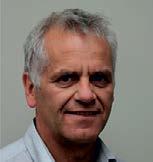
ONE of the country’s largest rural lenders is asking what new information will emerge from an inquiry into rural lending practices.
The government has requested the Primary Production Select Committee open an inquiry into rural banking, but an ANZ spokesperson says the bank is unsure what new information it will glean that farmers and Members of Parliament do not already have.
The select committee began a briefing on rural bank lending practices in February and based on what it was told, recommended further scrutiny.
This week the government asked the Primary Production and Finance and Expenditure Select Committees to hold an inquiry.
The ASB, ANZ and Rabobank have all welcomed the inquiry as an opportunity to have a factbased look at the industry and

to improve the transparency of agribusiness lending and the factors influencing lending interest rates
Federated Farmers told the committee that banks are shying away from lending to the rural sector and charge higher interest rates, make it tougher for farmers to borrow – and when they do they favour costlier overdrafts over term debt.
They also claim that customers previously considered safe are being re-categorised as distressed.
Responding to questions from Farmers Weekly, banks said they have not lost their lending appetite to the rural sector but that rural lending conditions reflect the associated risk.
They vowed to work harder to improve their relationships with customers.
Rebecca James, ASB’s executive manager for business banking, said the ASB has increased to 17% its share of the rural market in the past 12 months, evidence it is not shying away from lending to the sector.
Rabobank NZ chief executive Todd Charteris said the specialist agribusiness bank takes a longterm view of lending to the sector and has a $16.6 billion rural portfolio that has grown near $4.5bn in five years.
The spokesperson for ANZ said it has close to $15bn on loan to the rural sector, representing 24% share of the market.
“ANZ is committed to supporting the sector now and into the future.”
In a period of high inflation and interest rates the spokesperson said it is understandable many are questioning what they are being charged.
In the past decade the sector has become more resilient as customers took advantage of lower interest rates and higher commodity prices to reduce debt.
Interest rates are determined by economic conditions, regulatory
Continued from page 1
and when directors were aware of their inability to meet livestock payments while continuing to operate.
“I had a verbal undertaking in December from director Terry Lester that I would be paid that had no basis in fact.”
A Property Brokers video on YouTube dated late November last year profiles the Waimarie Meats company for sale by tender through local agent Gil Button.
The plant is advertised as an unsurpassed opportunity to purchase a world-class meat processing plant in a commercially nimble operation.
The plant employed 45 process workers and could process 180 beef carcases a day.
Button referred Farmers Weekly to company directors Murray
and monetary policy, customer security position and risk profile.
The Official Cash Rate has increased from 0.25% in October 2021 to the current rate of 5.50%, while market wholesale rates have also increased materially.
“Over the same period the average agri customer rate has increased by less than 4%, ANZ’s carded floating home loan rates have increased by 4.20%.”
Most of ANZ’s agri customers are on variable rates so rises in interest rates hit them sooner.
Overdrafts make up less than 2% of agriculture lending.
“History shows us that lending to businesses, including the agri sector, is riskier than lending to homeowners. As a result, we hold twice as much capital against agri lending as home lending.”
On the accusation banks are profiteering, the spokesperson said using return on equity (ROE) as a measure, ANZ’s average post-tax ROE of 12.3% over the 2010-2021 period was materially the same as the average post-tax returns of 12.2% of a valid peer group of international banks.
James said the ASB wants to work with farmers to address concerns they are feeling pressured from banks.
She reiterated that lending to the sector is considered more risky than lending to homeowners as farms often have volatile earnings, properties usually have limited alternative uses and there is often a lack of liquidity in the rural property market.
Westpac NZ’s head of agribusiness Tim Henshaw said its loans are competitively priced and the bank has not changed policy or enforcement of customer loan repayments in recent years.
“Lending to businesses like a farm carries greater risk than lending on a residential property –for example, a farm’s profitability can be more subject to weather events, market volatility, and other forces outside of its control.”
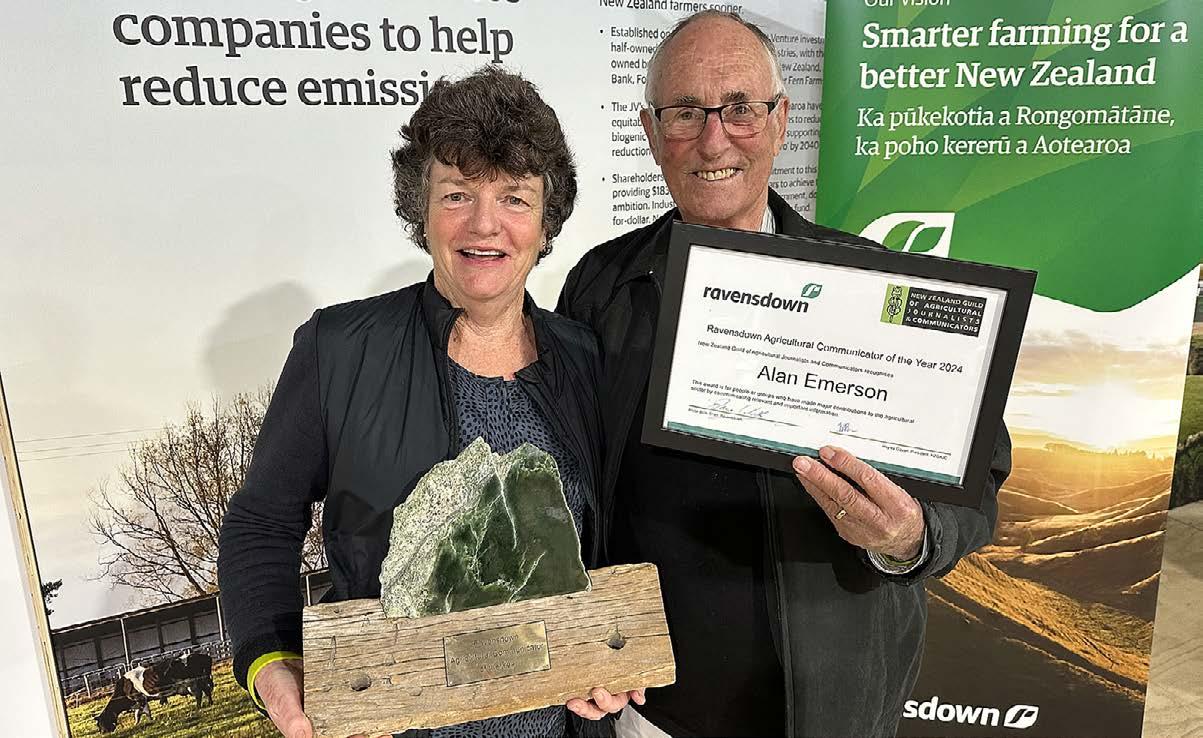

FARMERS Weekly columnist Alan Emerson has been named the 2024 Ravensdown Agricultural Communicator of the Year.
An event held at National Fieldays and run by the New Zealand Guild of Agricultural Journalists and Communicators, last week acknowledged Emerson’s extensive career and contributions to the agricultural sector.
He produced his first Farmers Weekly column, Alternative View, on September 2 2003, and AgriHQ publisher Dean Williamson said since then he has never missed his weekly deadline.
Emerson has worked as a farm adviser, served in the NZ Army and was a journalist and specialist rural reporter with the then NZ Broadcasting Corporation (NZBC) before being promoted to being an RNZ network editor.
He also worked as a director of the Employers Federation and in 1984 co-founded Communications Trumps, a Wellington-based public relations company that represented rural sector clients including Federated Farmers, the Fertiliser Quality Council and the dairy and fisheries industries.
In 2001 he sold the business and purchased a farm at Riversdale Beach in coastal Wairarapa, but
his links to the primary sector were not over. He joined Federated Farmers and serving on the Wairarapa Provincial Executive. He also wrote an agricultural column for the Wairarapa Times Age newspaper and has written six books.
As a columnist, Williamson described Emerson as playing the ball not the person and being “colour-blind”, willing to critique any policy or issue by asking hard questions and forming a wellarticulated opinion.
Kevin Geddes, the former executive director of the Fertiliser Quality Council, said Emerson uses his role to teach communication strategies to rural groups and encourages the farming industry to be open, particularly to urban people, about what farming does and its value to all New Zealanders.
The award has been made for more than 40 years.
Previous winners include Farmers Weekly managing editor Bryan Gibson, Katie Milne, the first woman to be elected president of Federated Farmers, Lain Jager, Zespri’s former chief executive, NZ’s former Special Agricultural Trade Envoy, Mike Petersen, agrienvironmental analyst Jacqueline Rowarth, Farmers Weekly journalist Hugh Stringleman and dairy farming advocate Tangaroa Walker.
Owles of Parua Bay Northland and Bryan Terry Lester of New Plymouth.
Lester said he would rather not comment on the liquidation until a full liquidators’ report was released.
The Ministry of Business, Innovation, and Employment’s Insolvency and Trustee Service confirmed with Farmers Weekly that the first liquidator’s report will be available on July 9.
Estimates are there could be at least a dozen farmers affected by the Waimarie liquidation, but the impact has also hit rural transport operators.
Bruce Stephenson of Stephenson Transport in Waipawa said they were owed $62,000 dating back to last spring, with little hope of seeing payment as unsecured creditors.
The first he knew of the liquidation was from Farmers
Weekly, but he said the outcome was not surprising.
“In this game you take what you can get when jobs come along. I did chase them up for payment, but it had been to no avail.”
Craig Nelson of CR Nelson transport in Masterton said he was owed between $21,000 and $25,000, and counted himself lucky – though he knew there was little chance he would see it again.
He said he started to get concerned when he had not received payment for transport services to the company last December, and also learnt the company was up for sale.
Nigel Castles of Dannevirke Carriers said he was also one of the luckier ones, being owed between $6000 and $10,000.
“This is the worst case we have seen in the industry as far as processors going broke for some time,” he said.

 Gerald Piddock NEWS Emissions
Gerald Piddock NEWS Emissions
THE government’s decision to opt agriculture out of the Emissions Trading Scheme until at least 2030 will have no bearing on Fonterra’s Scope 3 emissions targets, chief executive Miles Hurrell says. Those targets are driven by customers and consumers aim for a 30% intensity reduction in onfarm emissions by 2030 (from a 2018 baseline).
“It has provided a little bit of clarity and removing that ETS backstop will provide a little bit of clarity for farmers,” he said.
“It hasn’t changed our position because it’s driven by the market.”
The target was announced late last year. While it is still early days, farmer-shareholders understand that it is being driven by customers, he said, speaking at Fieldays.
He was also interested to see what direction the government takes around reviewing New Zealand’s policies around genetic engineering and modification, saying it has potential to contribute to that 30% target.
“We’re open minded to that and we think there’s some benefits to be had for our farmer shareholders.”
The issue of GE regulation was
ranked second in the list of top 10 priorities in the annual KPMG Agribusiness Agenda released at Fieldays.
Hurrell also gave an update on the strategy change announcement that occurred a month ago. The co-operative has been holding farmer-shareholder meetings across New Zealand to get feedback and answer questions.
“Generally economically, they understand that the three key channels – consumer, food service and ingredients – that over the long run it’s the lower end of those performances from a return-oncapital perspective.”
It hasn’t changed our position because it’s driven by the market.
Most farmers understand that from an economic perspective, he said, though he accepts there is emotional attachment to those brands.
Asked how it has been received, he said: “I think there is general support because they understand the economic drivers. We are driving for long term value in the co-operative and we believe there is better value to be created through a fantastic foodservice
and the ingredients business.”
The co-operative has also fielded interest from other businesses looking to purchase the brands and are beginning to appoint advisers for that process.
He emphasised it is still early days in a 12-18 month process.
Hurrell said the strategy shift will have a minimal effect on Fonterra’s R&D with much of it already focused on the businessto-business (B2B) marketplace. This includes advanced nutrition, active living and medical nutrition.
The innovation within its consumer business is done closer to market.
“The true research and development – which is done back in NZ – has been focused on understanding the true science and how we can move some of our products more into active living, healthy aging, medical nutrition –functionalities in the foodservice business in the creams and cheeses in particular. That’s where that true R&D in NZ is spent,” he said. That will continue in that B2B space, he said.
One of those brands in that nutrition space is Nutiani, which Fonterra launched in 2022.
The brand uses Fonterra ingredients that are put into consumer brands to be sold into pharmaceuticals, hospitals or sports and active lifestyle products.
“It’s a very strong B2B brand, but not one that consumers will know,” he said.

UNCHANGED: Fonterra chief executive Miles Hurrell says the government’s decision to keep agricultural emissions out of the ETS until at least 2030 will not change the co-operative’s Scope 3 targets.
He hit back at criticism that the strategy change would not add value to dairy products.
“Anything above the commodity milk price you could argue is
adding value and while consumer does add value – I get that point –we believe there is more value to be created by being more focused on our B2B brands.”

 Richard Rennie TECHNOLOGY Research
Richard Rennie TECHNOLOGY Research
ATEMPLATE to reunite farmers and scientists had its big reveal at Mystery Creek Fieldays with the opening of the Science for Farmers venue, showcasing the multiple strands of agri-research underway.
John Roche, the Ministry for Primary Industry’s director for its on-farm support team, likened the venue to a return to the respected and well-attended Ruakura Farmers Conferences held prior to Fieldays up until the late 1990s.
They provided an opportunity for farmers to get up close to the researchers and work that was at the sharp end of farm productivity.
“This is an attempt to bring that science back to the field days, with partners that include the Greenhouse Gas Research Centre, LIC, MPI and Manaaki Whenua Landcare Research,” Roche said.
“Farmers have felt a disconnect from scientists, and scientists from farmers.
“This is in a country that has had the most efficient primary sector in the world.”
The interactive site provided a chance for farmers to ask
scientists questions, see alternative pasture species mixes for themselves, and to learn more about major investments being made beyond the spotlight into the likes of methane mitigation.
Impetus for the project came from a visit Roche and MPI’s director-general Ray Smith made to Ireland’s National Ploughing Championships, that country’s showcase agricultural event.
“We got to see how our equivalent colleagues were running such an event, and felt we could do a copy of it in NZ, a version of leaning on fences and talking about pastures,” said Smith.
He had also detected a high level of frustration across the agri sector on how to improve communication between farmers and scientists.
He said the Irish have done a better job in bridging the sciencefarming gap and attributed this to New Zealand having had its traditional research structure radically altered through the 1990s.
The centre included a focus on specific research topics including methane reduction, improving pasture persistence and future genetics.
Minister for Agriculture Todd
McClay said an additional $50 million has been provided for methane mitigation research, taking the total commitment to $400m over the next five years.
A key focus will be working with AgriZero, with a total of $191m committed by it and the government jointly for the next five years, aiming to develop two to three mitigation tools for farmers that can be used by 2030.
Farmers have felt a disconnect from scientists, and scientists from farmers.
John Roche MPI
While acknowledging the value of “blue sky” science, Smith said focused, joint, industrygovernment research is likely the way forward in coming years as NZ moves to try to address its particular pastoral challenges. He said he is also heartened by the strong interest other agri companies have shown in the Science for Farmers effort, and how it could provide a good template to take further afield, beyond Mystery Creek.
 Richard Rennie MARKETS Trade
Richard Rennie MARKETS Trade
RAZIL and New Zealand
Bmay have enjoyed 60 years of diplomatic relations, but the enormous country remains something of a wilderness for all but the most determined when it comes to agri-business investment there.
A Mystery Creek Fieldays panel hosted by NZ Trade and Enterprise (NZTE) provided companies interested in entering the Brazilian agri sector some valuable insights into the opportunities and the challenges within its enormous borders.
Northland farmer Murray Douglas and his family have been running dairy operations in Brazil for 14 years, milking over 3000 cows across two operations. After arriving as a “naïve gringo” he said, it is only now the enterprise is starting to perform strongly, overseen by his son Roger.
“Brazil has a deficit of milk, and the opportunity is to produce quality milk at scale. The milk price runs 25% ahead of NZ’s, at about $12.50/kg milk solids at present, and it is priced monthly so you can make a lot quickly, but it can also turn around quickly,” he said.
Josh Wheeler, chief operating office for dairy auditor QCONZ, said Brazilian farmers are moving

to more confinement-type operations and are quick adopters of technology.
However, a challenge often faced is a very high incidences of mastitis, affecting as much as 20% of the herd.
He said Brazil has proven to be a tough market for the auditing company and early movers have to be fast movers in the market, as competitors are quick to mimic business plans and move to usurp
the early innovators.
His company has unexpectedly enjoyed considerable success, however, with the Milkbar calf feeder, after trialling it in a joint agri-tech shipment sent over several years ago.
But the depreciation of the Brazilian real has made importing products more costly in recent years, coupled with policies that place heavy tariffs on imported products and reward companies
choosing to produce domestically.
“You will be well rewarded for opting to manufacture in Brazil.”
This comes in the form of tax breaks and subsidies.
Both he and Douglas cautioned about the high level of bureaucracy and the importance of dotting all i’s and crossing t’s when completing any level of form filling.
“The banking system is also quite challenging and there are multiple tax systems. Getting debt funding with a decent amortisation period that is over two years can be very difficult,” said Douglas.
Vendor financing is a common source of capital for those seeking to grow their business, while much of the seasonal funding available is more geared around cropping operations than dairy milk cheques.
He said while many may believe Brazil is all about chopping down trees and rainforest destruction, there are in fact many rules limiting that, and what can and cannot be felled.
Awareness of market perceptions is growing, as are rules around proving the source of meat and milk, which means environmental standards are catching up, albeit not to NZ’s level yet.
He emphasised the words his son had told him when he first took on the family’s Brazil project.
“He said you must realise we are focused on being a Brazilian farm
business, not a NZ farm business in Brazil.
“You need to have a very clear focus on why you are there. It is not a get in-get out opportunity, you have to commit to the long term. And unless you have experienced Brazil, our comprehension of its scale is unknown.”
You need to have a very clear focus on why you are there. It is not a get in-get out opportunity, you have to commit to the long term.
Murray Douglas Dairy farmer
Pedro Simao, NZTE’s São Paulobased agribusiness development manager, emphasised that “Brazil is not for beginners”.
“But if you commit, it offers a huge opportunity based on the number of cattle. But it’s a big, complex market that can be challenging if you do not do your homework.”
Giuliana Silveria, CEO of the Latin America NZ Business Council, said there was little chance NZ would see a free trade agreement with Brazil anytime soon, with more hope in the future offered through the CCTP agreement that already includes Chile, Mexico and Peru.
 MARKETS Trade
MARKETS Trade
TRADE between the United Kingdom and New Zealand is building momentum one year on from the signing of the UK-New Zealand Free Trade Agreement, UK High Commissioner Iona Thomas says.
Exports from both parties have increased over the past year, indicating that businesses are interested in each other’s markets, and it was becoming more affordable
for each country to do business,
Thomas said, speaking at Fieldays.
UK consumers are also happy to have more choice when there are cost of living pressures. “To have great produce in stores is fantastic.”
She was diplomatic when asked about the controversy in May when UK farmers were angry that NZ lamb was being trialled by supermarket company Morrisons in its stores.
“Farmers everywhere are always keen to make sure that they can sell their produce so they’ll be
fighting for market share,” Thomas said.
It led to claims by the UK National Farmers’ Union that NZ lamb is produced to “potentially lower standards” and has high food miles, which were refuted by Beef+Lamb NZ. Thomas said NZ has always had access to the UK market and had been struggling to fill its lamb quota.
“We don’t see the market as being flooded by NZ lamb,” she said.
The FTA saw tariffs removed from the vast majority of NZ goods imported to the UK. Some of these
removals are time sequenced to take place after five years.
That will occur regardless of the upcoming election result, she said.
The FTA is also a living document and there are groups on hand that are in constant communication with their NZ counterparts around conversations to help companies utilise the FTA.
“Just in the last couple of months we had our chief vet visit NZ to talk about animal welfare [and] phytosanitary and to talk about ways we can have high standards between our two countries.”
Those conversations included finding common ground and collaborating where possible, particularly in the agricultural space. One of those is around sustainability.
“We’re here this week promoting UK agritech and ways that specific expertise in the UK can benefit NZ farmers and vice versa.
“It’s a real area of collaboration and there’s a lot of innovations that are happening that are applicable in both countries and we hope that farmers in both countries benefit from that.”

Soil pH, magnesium


• Granulated products for precision farming
• Targeted soil nutrition
• Easy application with starter fertilizer and/or seed
• Trusted quality for optimal results












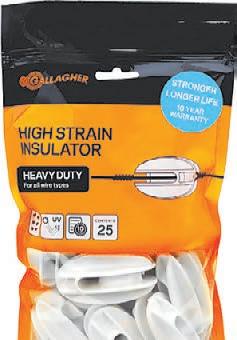








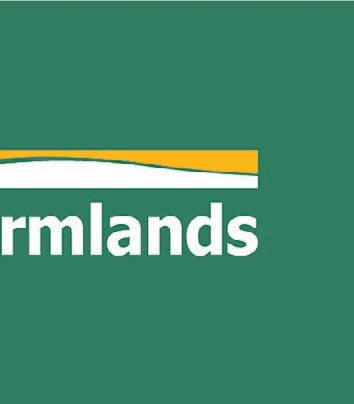




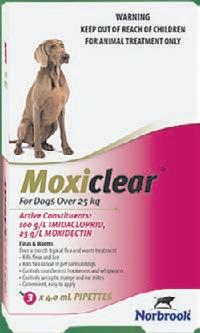









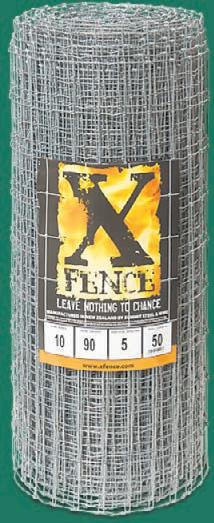



DAIRY farmer Stephen Todd says changes to the Accredited Employer Work Visa are likely to have a devastating impact on the industry.
The fourth-generation farmer said he’ll lose valuable members of his team if recent alterations to the system aren’t revoked.
The changes include most ANZSCO Level 4 or 5 occupations receiving shorter visas and having a reduced maximum length of stay in New Zealand, a requirement for a minimum standard of English, additional advertising and hiring requirements, and a new minimal skill and experience threshold.
“It will destroy productivity of the industry,” said Todd, who is president of Nelson Provincial Federated Farmers.
the business and brought their families to Aotearoa.
Jopet came to work on the farm from the Philippines 18 months ago and is a dairy farm assistant, and Andy is a farm manager who moved from the United Kingdom with his wife and family nearly a year ago to work on the farm.
“Both were granted a three-year visa when they came and there was an option after that we could have it extended to five years, which in hindsight I wish we’d done because as I understand it they’re no longer able to access this,” Todd said.
“At this stage, the way it’s written, there’s a maximum continuous stay period of three years, so at the end of that three years they’d have to essentially leave New Zealand and there’s a 12-month stand down period.
“That’s pretty brutal.”
An associate at Pitt & Moore Lawyers, Elly Fleming, has been

“The changes don’t make any sense from a farming point of view when we’re trying to be productive, contribute to the country’s economy and make the most out of our best people.
“The changes will mean having to send good people away and bringing in others we need to retrain. If we send these people away, most of them will go to another country like Canada or Australia, taking the skills we’ve given them with them.”
Todd and his wife Kim own three neighbouring farms near Murchison, with a total of 1900 cows. He said what makes it even more frustrating is that the changes announced in April came out of the blue.
He currently has two employees under the scheme (whom he asked not to identify beyond their first names), both of whom have contributed significantly to

The
changes don’t make any sense from a farming point of view when we’re trying to be productive, contribute to the country’s economy and make the most out of our best people.
Stephen Todd Federated Farmers
work experience or relevant qualification of NZQF Level 4 or higher,” Fleming said. “In a lot of the jobs, migrants won’t have a qualification so they need to show three years’ minimum work experience but many won’t have that either.
“Demonstrating experience means actually having some work references, tax records, and independent evidence. And that needs to be three full years, not three seasons.”
The English language requirements are another great concern to clients, she said. Farmers may have spent years building up skills in their workforce only to find that because their staff can’t pass the English language test they have to return to their home country.
inundated with enquiries from farmers confused and concerned by the changes.
She has clients across Aotearoa who employ workers under the system from countries including the Philippines, India, South Africa and parts of South America, many of whom she said hadn’t understood the new changes would directly impact them and their migrant employees.
The changes, in effect from April 7, have resulted in negative consequences for many employers, she said, especially those of migrants in occupations at ANZSCO Level 4 or 5 such as dairy farm assistants, general hands and farm workers.
One aspect of great concern to many enquiring has been the new minimum skills and experience requirements.
“Migrants have to show they’ve got at least three years of relevant
“A lot of employers are concerned their migrant workers may not even be willing to sit the English language test because it’s too overwhelming for them,” said Fleming.
“I’ve had clients who’re very concerned because this test involves reading, writing and listening, as well as speaking. Some migrants can get by with their oral communication, but it’s the reading and writing that can weigh them down resulting in an overall low score.
“These extra hurdles or barriers will make New Zealand less attractive and mean migrants have to spend more money before they can apply for their visas. Financially is that going to be viable for them or will they ask the employers to cover that extra cost?”
Fleming advises clients to expect delays in the application process too.
“Employers really need to plan ahead, do a review of their current and future workforce needs, and get professional advice if they do want to hire and retain migrants, so that they have the right systems in place and ensure the process is as smooth as possible. Minor mistakes can have major consequences.
“There’s a lot of outrage over these changes. It’s certainly creating more stress and pressure and many employers will need to look at whether it’s viable for them to continue operating.”
Todd advises ministers to look at the problem it’s created and reverse the changes to avoid damage to the country’s economy.
“The changes they’ve brought in are pretty brutal and it makes us unproductive as a sector because
we can’t be productive when we’re constantly losing good people and having to train new people.
“When we lose these guys there’s nobody here that’s wanting to do that job. We’ve got great Kiwis on our crew of 10 people, but there’s not a stack of them around the corner waiting to fill every role.”

The result, he said, if the issue is not addressed, is that farmers face increasing workloads and stress levels.
“Unfortunately that could lead to some pretty tough times with people in mental states because they’re overworked. That’s not an acceptable situation.”

 Richard Rennie NEWS Emissions
Richard Rennie NEWS Emissions
FARMERS are cautioned that despite being kept out of the Emissions Trading Scheme, there will be no free pass given by high value markets to allow emissions to continue unrestricted.
The government has confirmed agricultural ruminant emissions will be kept out the ETS, with a new Pastoral Sector Group established to develop a strategy to deal with pastoral methane.
Agricultural Minister Todd McClay said the government is committed to meeting climate change obligations without shutting down New Zealand farms.
“It doesn’t make sense to send jobs and production overseas while less carbon-efficient countries produce the food the world needs,” he said.
But Troy Baisden, University of Auckland professor and copresident of the NZ Association of Scientists, said farmers are being done no favours if there was no viable system put in place to help regulate and reduce emissions.
“The ETS is a mess, and it would be a bizarre directive to expose farmers to it. But if they are thinking they can rejoice, they need to think again.
“They may well come to prefer the NZ government comes up with a solution that works for them. They will not be happy if several hundred European diplomatic staff start working for the likes of Nestlé to impose rules on trade that make less sense than what our government and industry could come up with.”
He pointed to pressure already in place on Fonterra suppliers to deliver Scope 3 emissions reductions, directly resulting from overseas corporate expectations.
The decision to definitively keep farming out of the ETS confirms the death of He Waka Eke Noa (HWEN), in terms of which the primary sector was required to come up with a suitable split gas approach otherwise it would be included in the ETS.
Baisden said HWEN did provide an opportunity to come up with a workable solution, but it was difficult to know what level of tension there was between different pastoral groups that contributed to its ultimate failure.
Red meat producers wore the greatest impact on their profitability when a split gas pricing scheme was ultimately announced.
Professor David Frame of Victoria University agreed that a split gas approach outside of the

MARKET DEMANDS: Professor Troy Baisden cautioned that no ETS inclusion did not mean pastoral agriculture can expect to get away unregulated, with NZ’s markets continuing to demand carbon reductions.
The ETS is a mess, and it would be a bizarre directive to expose farmers to it. But if they are thinking they can rejoice , they need to think again.
Prof Troy Baisden University of Auckland
ETS has to mark a way forward for agriculture.
“I am delighted that agriculture is no longer included in the ETS.
However, the problem now is you do not have a big stick. The conversations we have to have now are the ones we should have had earlier.”
He said there are good ideas on how to better reduce agri GHGs, including some of the work by the Parliamentary Commissioner for the Environment, Simon Upton. That included offsetting a portion of the national herd’s emissions with on-farm plantings. Farms that achieve reductions above and beyond their planted areas over time could then trade their “surplus” offsets in a type
of cap-and-trade system.
However, before anything could be hammered out, Frame said, the obvious income inequality between drystock and dairy farmers has to be acknowledged and allowed for in policy and price settings.
“Otherwise, you run the real risk dairy farmers will simply buy up forest on drystock farms and have little incentive to make changes.”
Beef + Lamb NZ chair Kate Acland said the decision meets BLNZ’s argument that including agriculture in the ETS would be a disastrous outcome.
Welcoming the disbanding of HWEN, she said the red meat sector was prepared to be part of a new group discussing how to manage NZ’s agricultural emissions, but any involvement requires full transparency and discussion with its farmers.
“We will not allow this to be a repeat of the HWEN process.” She reiterated that BLNZ does not support a price being placed on agricultural emissions to achieve reductions, claiming emissions reductions are already happening more quickly than needed.
“The significant decline in stock numbers as a result of afforestation in the last few years means our sector will likely exceed the current target of a 10% reduction in methane by 2030.”
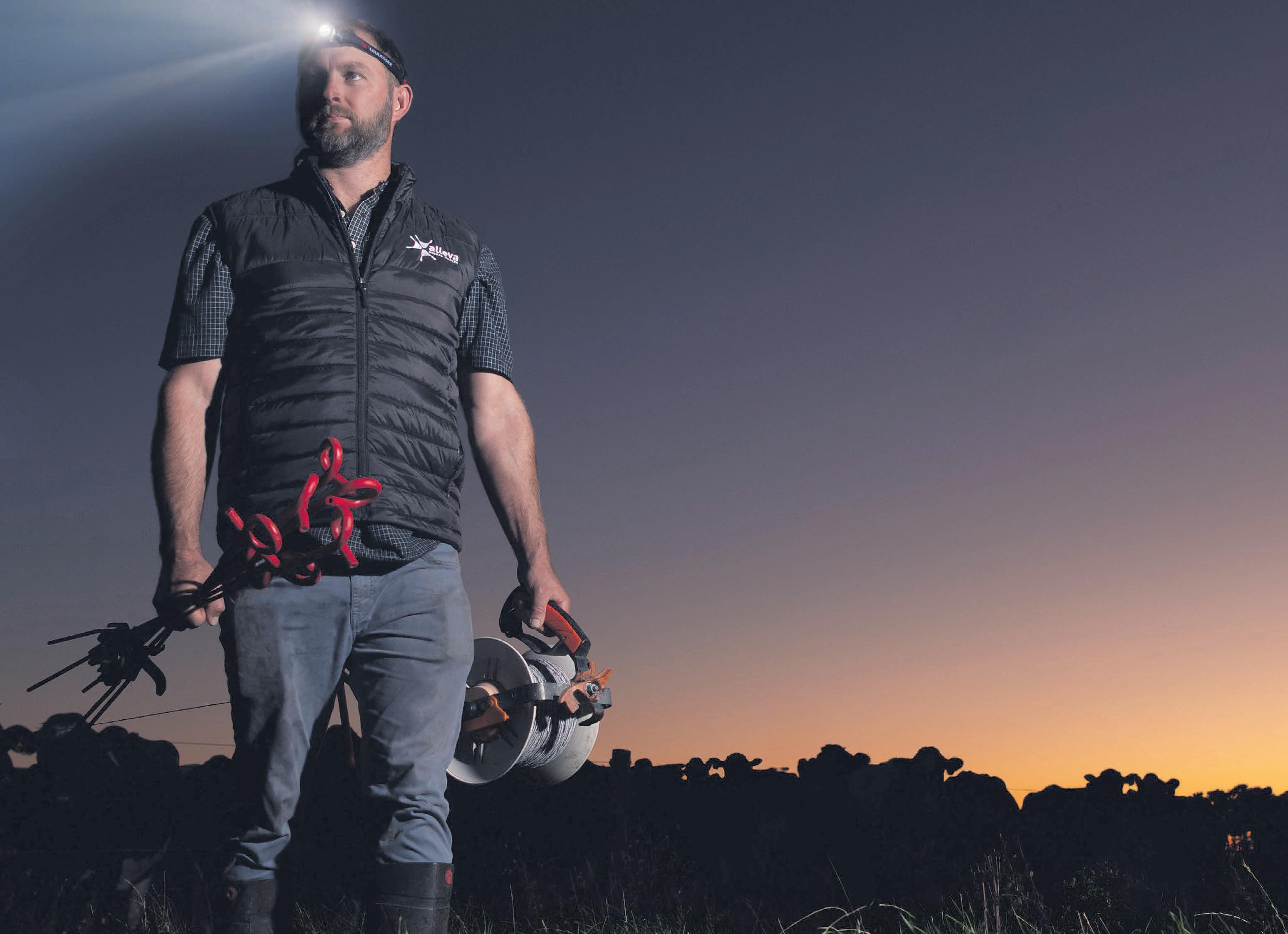


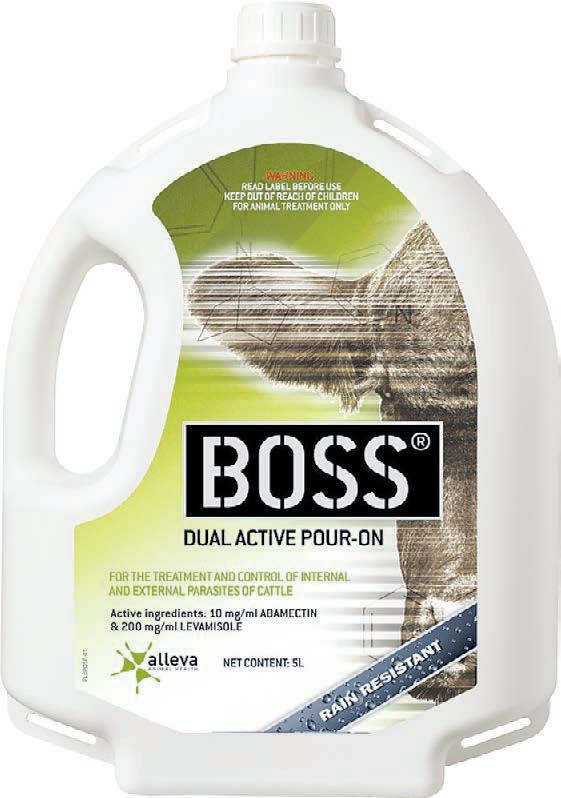







 TLivestock
TLivestock
OP prices stayed below $30,000 and sale averages below $10,000 as the two-year-old beef bull winter sale season reached week four.
Clearances have been satisfying but vendors have seen their averages trimmed by $1000 to $2000 and top-dollar highlights are few in number.
Martin Farming, Wakefield, sold Angus and Hereford bulls to a top of $28,000 paid for MF Angus Paycheck T 27, bought by Dave Stuart, Komako Angus, Ashhurst.
The Angus bulls averaged $8500 and 29 out of 30 were sold.
In the Hereford section Martin Farming sold seven of nine and averaged $7900.
Top price was Lot 32 MF 2202 to Simon and Claire Vincent, Wantwood, for $13,000.
Transfers were Lot 31 to Robert Peacock, Orari Gorge Herefords or $12,000 and Lot 33 to Jack
Murray, Matariki Herefords, for $5000.
Silverstream Charolais and Herefords, Christchurch, made $24,000 for Lot 18, Silverstream Transtasman T217, sold to Don Dittmar and Rimu Charolais, Taumarunui.
The Charolais clearance was 49 from 49 with an average price of $8466.
Clearances have been satisfying but vendors have seen their averages trimmed by $1000 to $2000 and top-dollar highlights are few in number.
Silverstream Herefords sold a top price of $10,000 for Lot 62 Pute Tyson T43, to Okare Station, Wairoa. The average was $7345 for 12 out of 15.
Brent and Anna Fisher said the results were pleasing considering the hard times in farming at present and the sale was strong and steady right to the end.

The Atahua Angus final bull sale saw Lot 9, Atahua 9-22 sold for $11,500 to Taimate Angus, at Ward. He is the son of the topselling cow at the dispersal earlier this year.
Lot 13 sold to Meadowslea Angus, Fairlie, for $9000.
Michelle Dalziel said the Atahua hosts were very pleased with the turnout and the support from long-time buyers. The average price was $6823 and 17 sold out of 20 offered.
Mt Mable Angus, Dannevirke, had a top of $16,500 made twice, by Patoka Station and Timihanga Station. Oregon Angus paid $14,000 for Mt Mable 2250.
Mt Mable sold 26 of 27 and averaged $8500, a good outcome in a tough selling year.
Two northern Waikato Angus studs had good averages – $9804 for Rolling Rock, Te Akau, and $9153 for Twin Oaks, Te Akau.
Rolling Rock sold 23 out of 24 and had a top of $17,000 paid by Kincardine Angus, Queenstown.
Twin Oaks sold 52 of 60, averaged $9153, and also had a top of $17,000, paid by Roger Landels, Clinton, followed by one at $16,500 and another at $16,000.
Waitangi Angus, Bay of Islands, sold 46 of 50 and averaged $6260, with a top of $13,500 for Waitangi T243, paid by Jagre Holdings, Nick’s Head Station.
Riverlands J Angus, Cheviot, had a full clearance of 22, an average price of $7850 and a top of $15,000 paid for 2200731.
Grassmere Polled Hereford sold 10 of 14, averaged $5500 and had a top of $8000 twice, one paid by Matapouri Herefords.
Earnscleugh Angus, Alexandra, sold 50 from 52 and averaged $8290 with a top of $16,000.
Earnscleugh Herefords sold to a top of $20,000 from Woodburn Herefords and averaged $6920 for 19 sold out of 29.
Earnscleugh Composite bulls reached $12,000, paid by the McNeish family of Roxburgh, and

sold 29 of 33 offered, averaging $6276.
Wilencote Polled Hereford, Gisborne, sold 27 of 29, averaged $7759 and had a top of $13,000.
Mt Possession Angus, Ashburton, sold 13 of 18, averaged $6120 and had a top of $10,500.
Maungahina Speckle Park and Hereford, Masterton had a top price of $20,000 for the SP Lot 36, Thumper 231, paid by Cochrane Farms.
Top price for the Herefords
was $18,000, Maungahina Giant 220079, sold to Mokairau Stud. The averages were $7900 for 10 Speckle Parks sold and $9388 for 27 Herefords out of 32.
Totaranui Angus, Pahiatua, sold 29 out of 34 and had an average price of $8155, with a $14,000 top price paid by David Dalziel.
Ranui Angus, Whanganui, sold 36 out of 39, averaged $7208 and had a top price of $12,000 paid by Owen Maher.

With a precision engineered PPP Sheep Dipper that’s built to last
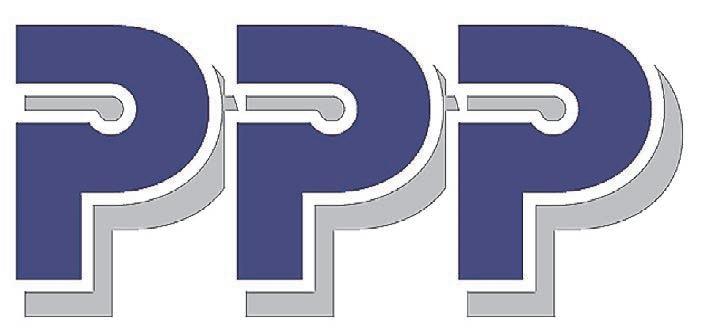







MORE supervised placements for trainee doctors at medical practices are needed for New Zealand to benefit from a third medical school, according Professor Tim Wilkinson, the acting dean of Otago Medical School.
The current shortage of one-onone supervised clinical experience placements for trainee doctors cannot be easily solved, Wilkinson said.
University training of doctors can be easily scaled up with the government approving funding in last month’s Budget for an additional 25 trainee doctors split between Otago and Auckland universities.
The Budget also allowed for $2.575 million to fund an independent cost benefit analysis and business case for establishing the country’s third medical school at Waikato University.
Wilkinson said he supports any initiative to grow the rural health workforce but the supervised clinical positions bottleneck
currently exists with two medical schools and needs to addressed before a third is established.
“They need experience but they need someone to guide them with their learning.”
Allison Bennett, the group manager of public health systems with the Ministry of Health, said the department – alongside the University of Waikato, Health New Zealand and the Ministry of Education and Tertiary Education Commission – is gathering information needed for that analysis.
We are not short of people wanting to train to be doctors, but we are short of those with a rural background.
Prof
It will go before the cabinet later this year.
Wilkinson said addressing the shortage of rural doctors remains a challenge.
“We are not short of people wanting to train to be doctors, but
we are short of those with a rural background.”
Otago University has for 18 years run a rural immersion scheme to attract rural medical students, a process that has proven to encourage them to work in rural practice.
It began with six students and has gradually increased over the years, to 31 this year.
The university also promotes medical careers in schools, and trainees spend a year working in a rural practice.
Regardless of which field of medicine people go into, Wilkinson said medical professionals should be exposed to rural practice to improve their understanding when treating rural people.
Dr Kyle Eggleton, associate dean in the Faculty of Medical and Health Sciences at the University of Auckland and the director of the university’s Rural Health Unit, said it has capacity to take more medical students.
The university has for more than a decade run a regional-rural admissions scheme that provides entry for rural or regional students into medicine, optometry, medical imaging and pharmacy.

FUNDING: Last month’s Budget catered for an additional 25 trainee doctors split between
“The university is also working on a plan to provide rural highschool education support to better prepare students for professional health careers,” Eggleton said. It also identifies medical students at the start of their training who are interested in rural careers and provides additional rural-focused tutorials, farm stays, rural community visits, mentoring, and rural clinical placements from
the second year of training. Since the programme started, 48 students have been through it. The university also runs annual rural clinic placements for 130 health students in Whakatane, another 40 to 50 Hokianga and year-long regional-rural medical programmes for fifth-year students in rural hospitals and rural general practices in Northland, Taranaki, Bay of Plenty and Waikato-Lakes.
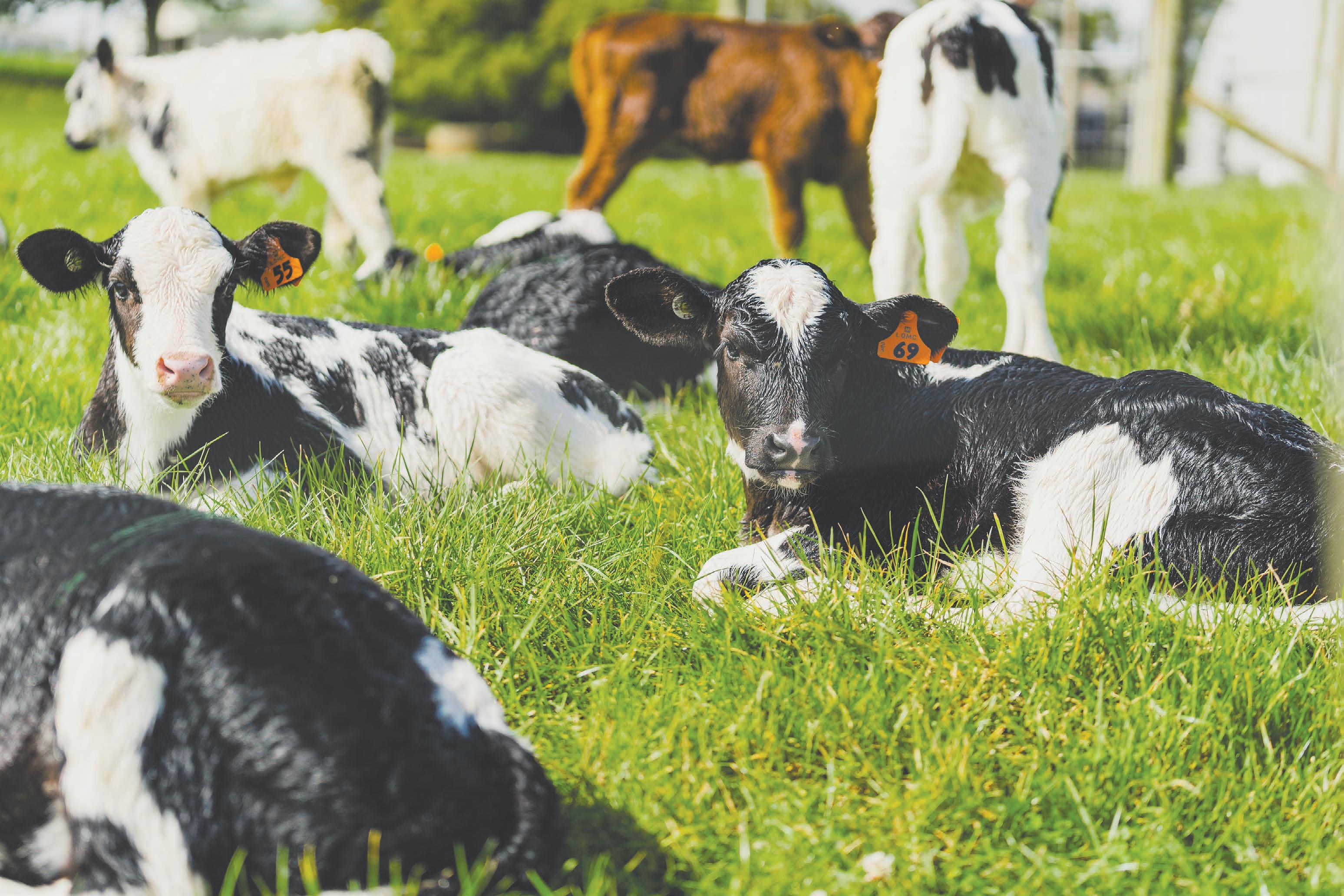

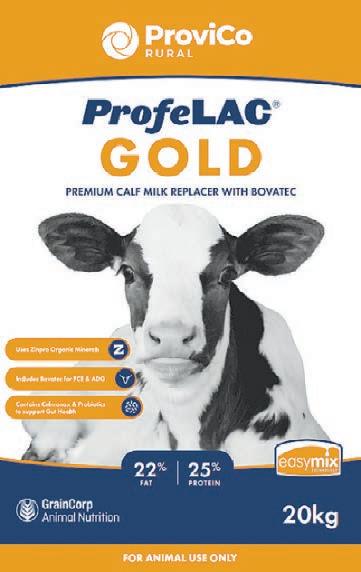
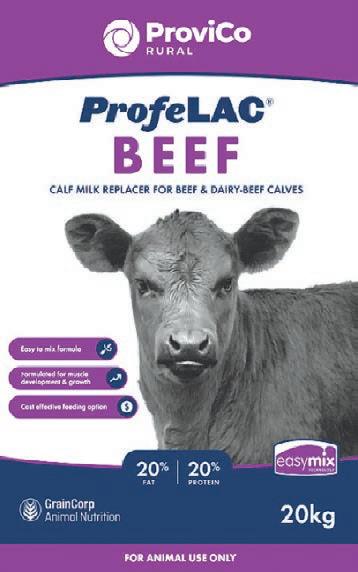

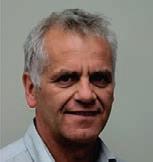 Neal Wallace NEWS Regulation
Neal Wallace NEWS Regulation
ONE-fifth of licensed firearms holders are expected to have registered their firearms in the first year since the establishment of the Firearms Safety Authority.
The registry was established on June 24 last year and the executive director of the Firearms Safety Authority (FSA), Angela Brazier, said as of June 3, 43,656 people, or 19% of licence holders, had registered 208,915 firearms and 8430 firearm parts.
“We are on track to have supported one-fifth of licence holders to register at Year 1 of the five-year plan, which is a significant milestone.
“It does exceed our initial estimates when the registry was first established,” she said.
Establishing the register was a key finding of the Royal Commission of Inquiry into the March 15 2019 terror attack on two Christchurch mosques.

Brazier said it is designed to mitigate the risk of firearms falling into the wrong hands by giving greater transparency when firearms are bought and sold,
imported, and manufactured.
“Police have growing evidence of a small number of licence holders who are diverting firearms to criminals,” she said. The registry will assist them reduce the flow of firearms to the black market.
The vast majority of firearms licence holders are law abiding and just want to do the right thing.
Angela Brazier Firearms Safety AuthoritySince March the number of registrations has exceeded 5000 licence holders a month and in May that number increased to 6000 a month.
“We believe this positive start to the registry is because the vast majority of firearms licence holders are law abiding and just want to do the right thing,” said Brazier.
“Many licence holders have told us they see registering their firearms as just another of their obligations as a responsible
firearms licence holder, just like keeping the firearms secure, transporting them safely, and using them in a responsible way.”
The design and construction of the registry was delivered on time and cost $10.4 million.
Annual operating costs are estimated at $8.5m with funding from the Police budget. Licence holders are not charged a fee to enter their details.
The coalition government agreement includes a review of the registry to assess if it will be effective in improving public safety. That review is being done by the Ministry of Justice and is underway.
Brazier said the FSA has dedicated funding for the establishment of the registry and a new “riskbased licence system” which will ensure firearms licences are granted only to people who meet a legal test of being “fit and proper”.
It also enables the FSA to promote firearms safety and training, and engage with licence holders in their own communities, especially outside the main centres.


NEW Zealand milk production has stalled over the past eight years but has not “peaked” and will grow again when farmers get the right market signals.
So says Coriolis consultancy principal Tim Morris, who pointed to the annual 1% increase in milk per cow, which he described as occurring like clockwork over the past 50 years.
“Look at other countries, like Israel, and see that NZ is nowhere near the biological limit and at some point the decline in cow numbers will stabilise and milk
per cow will continue to grow.
“Price signals to increase production have been muted recently, while at the same time, input costs have been growing faster than milk prices.”
Morris also points to longer-term farm consolidation and milking platform size increases as trends.
Effective hectares per farm have
Strong

“
One of the key things that we are talking about is that we need to join up a lot of this different regulation and make it practical for people on the groundGeoff Simmons, chief economist
to PCE
increased at 2% annually since the 1980s and the trend towards larger farms means lower costs per cow and per hectare.
“Global demand and consumption have not stalled –this is primarily a New Zealand issue.
“Going back to the 1970s, there have been previous stalls followed by a return to growth.”
Farmers are coping with significant external pressures, such as environmental requirements and urban sprawl.
The trends suggest that the average NZ dairy farm has reached maximum grass per cow at current stocking densities and management systems.
At the same time the use of locally grown and imported feed supplements has stabilised.
Some commentators say this is “peak dairy” and others say it is a cyclical retrenching.
“Independent on your view of the future number of cows, it is almost incontrovertible that NZ will produce more milk in the future,” Morris said.
“Strong peers, including Ireland, Australia and the UK, all achieve more milk per cow.”
Conversely, if NZ cows were producing at the same levels as cows in these countries, we would need up to 1 million fewer than the current 4.9 million to maintain our current national production.



I S TE N N
The Parliamentary Commissioner for the Environment has released a new report urging New Zealand to address the issue of land-use change so it’s done equitably and in a way that supports rural communities and the environment. Bryan speaks with the commissioner’s chief economist Geoff Simmons about the report.
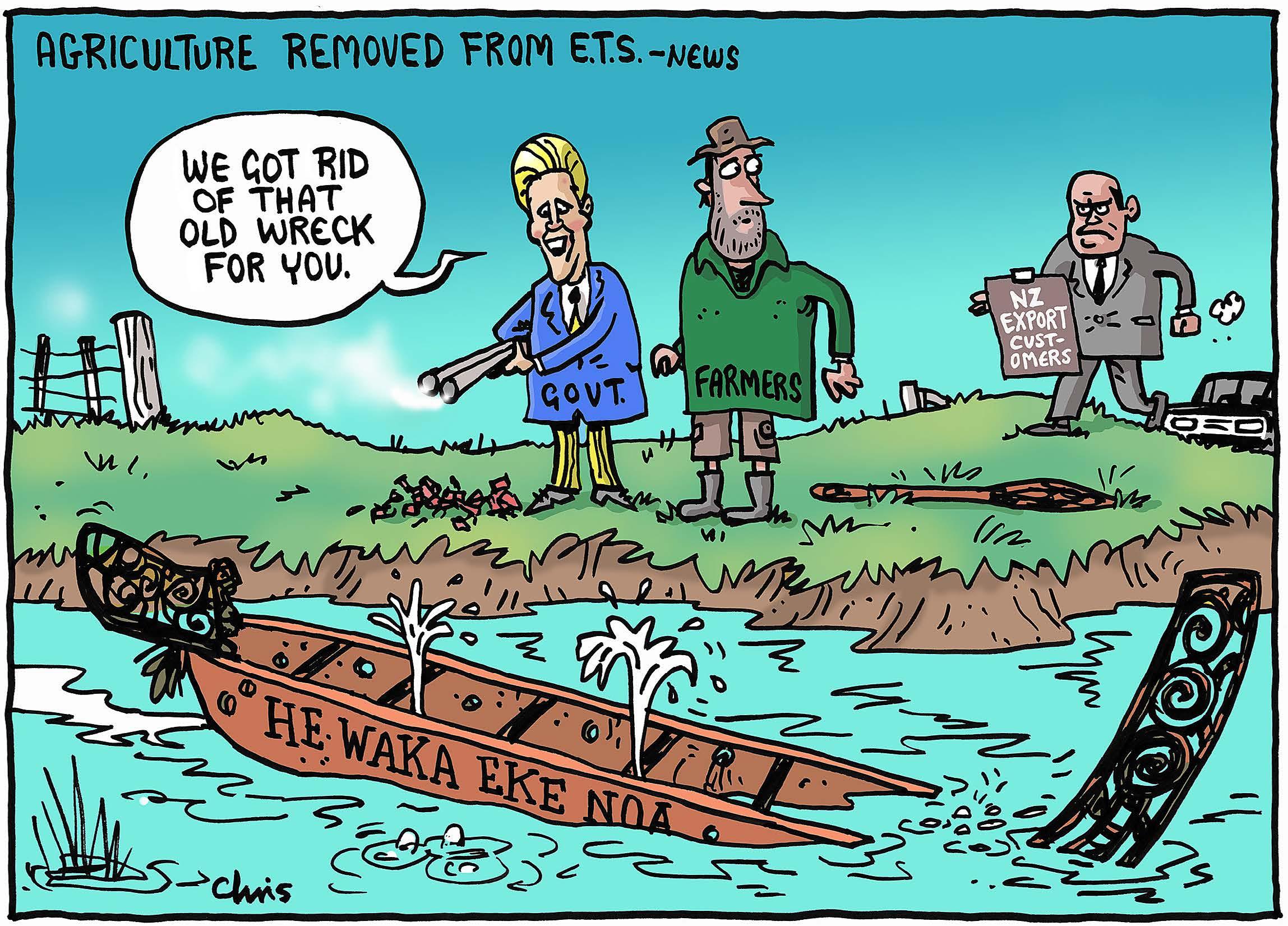

equitable and viable solution to the same problem.
Methane is responsible for about 60% of NZ’s total contribution to atmospheric warming, prompting the previous government to adopt target reductions of 10% by 2030 and a 24-47% reduction by 2050.
Ironically, the estimated loss of 1 million stock units due to afforestation between 2017-22 means the livestock sector is likely to exceed the 2030 target.
enough” camp have been quick to criticise removing the threat of agriculture joining the ETS, but have not provided a single viable solution of how to reduce emissions.
Equally, commentary from scientists and others claims NZ is ignoring its international responsibilities and that international consumers will react negatively.
Both those positions assume nothing is being done.
ALLAN Barber’s opinion piece on consumer and commodity markets ends with a devastating lack of vision for New Zealand to be a commodity producer forever.
“Most of New Zealand’s two largest export sectors appear to have accepted the inevitability of achieving excellence as a processor and supplier of commodity products and ingredients, because they simply do not have enough scale and financial strength to be international consumer goods marketers.”
If so, what a sellout to Nestlé or another global giant and what a waste of decades of Kiwi companies large and small, building the reputation of Brand New Zealand. For consumers overseas there is automatic appeal and added value from the name. Adding value for consumers really should not be put in the “too hard” basket by the Fonterra board.
Given global consumer trends are in New Zealand’s favour, there must be other benefits to justify Fonterra’s plan for selling the family jewels. Who benefits if farmers can’t control consumer brands to ensure their supplier position isn’t deemed replaceable long term?
NGibson 06 323 1519
bryan.gibson@globalhq.co.nz
Mentor-Fredericks editorial@globalhq.co.nz
Wallace 03 474 9240 neal.wallace@globalhq.co.nz
Williscroft 027 298 6127 colin.williscroft@globalhq.co.nz
Scott 021 908 400 annette.scott@globalhq.co.nz
EWS that the government has dismantled He Waka Eke Noa and removed the threat of agriculture entering the Emissions Trading Scheme is welcomed but also confirms the complexity of the challenge to reduce biogenic methane. At its most simplistic, the easiest way is to reduce the number of farmed animals, which is what Green Party co-leader Chloe Swarbrick implied should happen in an RNZ interview last week.
Weekly is published by GlobalHQ, PO Box 529, Feilding 4740. New Zealand 0800 85 25 80 Website: www.farmersweekly.co.nz
ADVERTISING
Andy Whitson
This begs the broader question of whether a tax is an appropriate tool.
027 626 2269
New Media & Business Development Lead andy.whitson@globalhq.co.nz
Steve McLaren 027 205 1456
Auckland/Northland Partnership Manager steve.mclaren@globalhq.co.nz
Jody Anderson 027 474 6094
Waikato/Bay of Plenty Partnership Manager jody.anderson@globalhq.co.nz
Stringleman 09 432 8594 hugh.stringleman@globalhq.co.nz
Piddock 027 486 8346 gerald.piddock@globalhq.co.nz
But in the real world, that has economically ruinous implications for New Zealand and was why farmers rejected He Waka Eke Noa (HWEN) with estimates that its proposed methane tax would price 20% of sheep and beef farms and 5% of dairy farmers out of existence.
Rennie 07 552 6176 richard.rennie@globalhq.co.nz Stirling 021 136 5570 nigel.g.stirling@gmail.com
Williamson 027 323 9407 dean.williamson@globalhq.co.nz
Donna Hirst 027 474 6095
Lower North Island/international Partnership Manager donna.hirst@globalhq.co.nz
Grant Marshall 027 887 5568
ISSN 2463-6002 (Print)
ISSN 2463-6010 (Online)
It could be argued that drystock and dairy farmers are more aware of their obligations than those in most other sectors.
Debbie Brown 06 323 0765
Noticeboard/Word Only/Primary Pathways classifieds@globalhq.co.nz
Fonterra, Silver Fern Farms and Alliance, for example, have announced or are about to announce greenhouse gas emission targets for their suppliers.
Grant Marshall 027 887 5568 Real Estate Partnership Manager realestate@globalhq.co.nz
Andrea Mansfield 027 446 6002 Salesforce director andrea.mansfield@globalhq.co.nz
PRODUCTION
A tax is designed to change or moderate behaviour but, given the absence of practical and economically viable solutions to reduce methane emissions, pricing those emissions could provoke change counter to what is desired.
South Island and AgriHQ Partnership Manager grant.marshall@globalhq.co.nz
This inequality created obvious tension within HWEN as sectors sought the best deal for their members, so there will be immense pressure on the newly formed Pastoral Sector Group as it seeks an
Javier Roca 06 323 0761 Livestock Partnership Manager 027 602 4925 livestock@globalhq.co.nz
The reality is that with an industry as large and as important as agriculture, change as significant as dealing with methane has to be surgically planned, so it is right that research challenging the current narrative be investigated.
Lana Kieselbach 027 739 4295 production@globalhq.co.nz
Advertising material adcopy@globalhq.co.nz
It would divert cash that could otherwise be more effectively invested, reduce livestock numbers by encouraging land use change and lower NZ production, which would be picked up by less efficient producers offshore.
SUBSCRIPTIONS 0800 85 25 80 subs@globalhq.co.nz
That includes a 2021 finding from the Intergovernmental Panel on Climate Change, supported by climate scientists Myles Allen and Michelle Cain, that globally methane only needs to reduce by about 0.3% annually for it to not be adding any more warming.
Printed by Ovato NZ Ltd Delivered by Reach Media LtdMany in the “agriculture is not doing
NZ farmers need to address their GHG emissions, but research is constantly evolving and for a sector as economically and socially crucial as agriculture, we need to tread carefully.

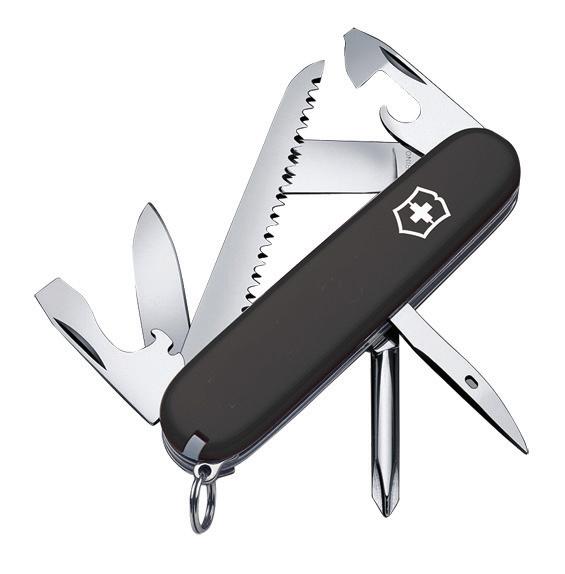
THE government’s recent announcement of an independent review of the methane targets was a relief for many farmers.
Most farmers acknowledge they have a role to play in addressing climate change.
But for many years farmers and organisations like Beef + Lamb New Zealand have been drawing attention to the fact that NZ’s current methane targets are too high and that the targets are asking agriculture to do more to address climate change than what is being asked of carbon dioxide emitters.
The government’s recent announcement that the review will consider the current methane targets’ consistency with “no additional warming” finally recognises the valid arguments about fairness farmers have been making.
Because every unit of carbon dioxide lasts for thousands of years, this means every unit of carbon emitted adds to warming.
It’s only when carbon dioxide gets to “net zero” that it is adding “no additional warming”. NZ’s current target is to get to “no additional warming” from carbon dioxide by 2050.
Because methane is a shortlived gas, the science shows only modest reductions in methane are needed annually for it not to be adding additional warming.
The IPCC stated in a major report in 2021 that methane only needs to reduce by about 0.3% annually for it to not be adding any more warming.
The report recognised that if methane is reducing by more than 0.3% per year, it is actually reversing previous warming: “negative” net zero or having a cooling effect.
But the report also acknowledged that if methane was increasing it was significantly increasing warming as it is a powerful but short-lived gas.
NZ’s current methane targets of a 10% reduction by 2030 and a 24-47% percent reduction by 2050 require far greater reductions in methane than 0.3% each year.
It is therefore entirely appropriate that the government review the methane targets.

We do not want
But there are also a wider fairness issues at stake.
Some climate scientists have said because methane in NZ has made such a significant contribution to warming to date, it needs to do more than just stop adding additional warming to the atmosphere – it needs to reverse some of its previous warming.
They argue that aiming for “no additional warming” from methane is “grandfathering” – in other words, that it maintains
that prior emissions increase future emission entitlements. Yes, methane is responsible for about 60% of NZ’s total contribution to warming of the atmosphere to date.
But in nearly every other developed country, carbon dioxide is the dominant gas and has contributed 70-90% of warming to date in those countries.
Most developed countries have set a target of getting to “net zero” for carbon dioxide by 2050, or “no additional warming” by 2050.
In all of those countries, therefore, the dominant gas will continue adding significant amounts of new warming out to 2050 when it finally gets to “net zero”.
If people are concerned about
taking account of previous warming contributions, why are they not raising concerns about “net zero” targets for carbon dioxide?
If the grandfathering argument were applied to carbon dioxide, we should also be asking carbon dioxide emitters to pay for this year’s emissions, and their previous emissions, which are continuing to warm the atmosphere.
Research by internationally respected United Kingdom climate scientists Myles Allen and Michelle Cain found that if other countries meet their existing emissions reduction commitments, then a 15% reduction in methane would see NZ methane contribute no additional warming from 2020 levels.
This is more ambitious from a climate perspective than what is being asked of carbon dioxide in NZ (net zero by 2050).
We would also note that achieving NZ’s net zero target for carbon dioxide relies heavily on significant amounts of new plantings of pines, which is mostly happening on productive sheep and beef farms.
Farmers are willing to play their part to address climate change. What they are looking for is a fair approach.
We do not want agriculture to be a political football on climate change.
If we can get fair and equitable targets and the right policies in place, we can move on, focus on achieving these goals and playing our part alongside every New Zealander in tackling climate change.
 Cameron Bagrie Managing director of Bagrie Economics and a shareholder and director of Chaperon
Cameron Bagrie Managing director of Bagrie Economics and a shareholder and director of Chaperon
IN THE May Monetary Policy Statement was a special feature on exports. It highlighted a stark trade-off. Constrained export growth means resources are deployed elsewhere.
That redeployment and less growth from agriculture (a 2% productivity year industry) is likely one factor contributing to slower productivity growth, which means slower growth in living standards.
Exports of goods have declined as a share of GDP. New Zealand’s
goods exports as a share of the economy have been on a downward trend over the past decade, from their 2013 peak of 22% to about 18% at the end of 2023.
The Reserve Bank of NZ notes that export growth has gone from 4-5% per year in the late 1990s and early 2000s to 2.5-3.5% in the 2010s. That’s barely above inflation.
That means resources such as labour and capital are being deployed away from exports into other parts of the economy such as domestic demand, and particularly housing.
We can see that in a bank lending statistic that shows home lending has gone from around half of all lending in 2010, to 63% now. Home lending has gone from 57% of bank lending to 63% in the past five years, partly driven by banks being required to hold more capital.
Goods exports are dominated by agriculture, which has seen multifactor productivity growth (the combined efficiency of labour and capital) on average of just under 2% from 2008-2023 compared to 0.2% for measured sector of the economy in aggregate.
Primary sector productivity is good; food, beverage and tobacco manufacturing productivity is not,
with negative average multifactor productivity growth from 2008 to 2023. Construction sector productivity has averaged -0.1% per year.
I noted last month in my Farmers Weekly column that productivity for the New Zealand economy averaged 1.4% per annum between 1993 and 2013 but averaged only 0.2% per annum over the past 10 years. We have relied on migration for growth, which of course stokes demand for housing.
The Reserve Bank revised down its outlook for exports in May, citing the outlook for free trade agreements, slower growth in China and the impact of environmental protections. China’s growth per year over the coming six years is expected to be roughly half (3.9%) what it experienced between 2010-2019, which was 7.7% each year.
Contrast that with the government’s aspiration to double exports.
The real kicker, though, is what poor export performance means for our living standards if exports continue to underperform the general economy, meaning resources could continue to transfer to less productive areas.
The RBNZ notes, “To the extent that this reallocation results in
lower productivity growth, this contributes to lower potential GDP growth.” Aka, it makes us relatively poorer.
A low productivity economy cannot grow as fast as a high productivity one without generating inflation. It forces the central bank to apply the economic brakes.
Slow growth in exports doesn’t just constrain growth and productivity, it contributes to a wide current account deficit.
One release valve helping exports is likely to be the NZ dollar settling in a low range. Slow growth in exports doesn’t just constrain growth and productivity, it contributes to a wide current account deficit.
The RBNZ is projecting the current account (our national cheque-book with the rest of the world) will remain above 6% of GDP (in the red) over the coming two years.
Deteriorating export performance is of increasing concern. Goods and service exports have fallen from 31% of GDP to 25%. The finger cannot be pointed at tourism, which has
largely recovered post covid. The decline has largely come through the exports of goods.
We are not the small open trading nation we claim to be, seventh from the bottom of the OECD in total exports as a share of GDP.
Constrained export growth, via slower growth in China, environmental restrictions or rising protectionist vibes, are subset of a lot of issues. Disruption caused by the effects of climate change another, though water storage, if we can accelerate it, can help manage some of that risk. Water could be a huge enabler.
The NZD/USD has been above its four-decade average for almost three-quarters of the past 10 years. The NZD is only now settling consistently more in exporters’ favour, with the exception being the NZD/AUD that is still above estimates of fair value.
There are a host of infrastructure bottlenecks that need addressed, including Port of Tauranga’s capacity and State Highway 29. We need to be focusing more on such examples of supply-side factors. A tradedeal is worthless if you can’t supply the product.
That includes getting bank regulatory settings right.

Alan Emerson Semi-retired Wairarapa farmer and businessman: dath.emerson@gmail.com
YOU could have knocked me over with a feather when I read that the Tiwai Point Aluminium Smelter was going to get another 20 years of life.
We are told that Meridian Energy and New Zealand Aluminium Smelters (NZAS) have agreed to a long-term fixed price power contract until 2044.
Meridian Energy chief executive Neal Barclay was effusive over the deal.
“This is a fantastic outcome for New Zealand and the Southland region,” he told me.
“It’s further proof that large industrial businesses can utilise New Zealand’s renewable energy advantage and create low carbon sustainable products, high value jobs and export dollars for our country.”
My view of that statement is that the PR department had pushed the overdrive button.
Unsurprisingly, I have an alternate view.
The smelter is an emitter of CO2. A large emitter, not that anyone seems concerned. They’re more interested in criticising the methane emitted by foodproducing cows. For the record, the smelter produces 33,000 tonnes of aluminium producing 660,000t of CO2 annually.
The smelter has been getting a free ride on that pollution with the government allocation of carbon credits in 2002 being greater than those actually emitted by the smelter. The new 20-year deal will, experts agree, be worth a massive $2 billion in NZ taxpayer subsidies over the next 20 years. Why?
Experts also agree the extension of the smelter deal will make it difficult for NZ to reach its climate targets. Again, why?
The smelter uses around 13% of all the power NZ produces. We’re burning coal to produce electricity as we don’t have the generation capability.
Granted, in the new agreement the smelter will go slow when
there’s a power shortage but I believe there are better options.
Further, if Tiwai Point closed it would release a large amount of available electricity, hopefully at a competitive price. This would encourage fossil-fuel-burning companies to convert to electricity, thus lowering our GHG emissions.
The smelter is, according to experts, costing ordinary Kiwis $200 a year in higher power costs. Add to that the Commerce Commission’s recommendations that we have a $15 a month increase in power prices next year and the consumer is getting screwed.
We’re massively subsidising a multinational’s power use at the expense of local companies.
If we then consider the $30 million the Key government gave to the smelter, you have a liability, not an asset. As a taxpayer I was humbled by the then government’s largesse.
Rio Tinto, the owner of NZAS, is a US$113bn company. Why did we subsidise them to the tune of a $30m handout?
In addition we’re told that the smelter gets its power for onesixth of the price paid by other users.
Think of that. We’re massively subsidising a multinational’s power use at the expense of local companies such as Fonterra, Silver Fern Farms and Open Country Dairy.
Also, cheap electricity would encourage those businesses burning coal for heat to switch to electricity.
Environment Southland released a report earlier in the year that assessed the contamination at Tiwai Point.

There are around 1000 dairy herds in Southland with almost 6000 cows.
There are a lot more employed in the Southland dairy sector than at the smelter.
The NZ Herald reported that the Southland dairy operation employs a total of 55,000 people and brings in $3.6 billion annually in wages. Compare that with the smelters’ own figures saying it contributes $400m to the
Southland economy annually.
Notice I’ve only talked about the dairy sector. Adding sheep, beef, cropping, trees and deer and the figure would be much higher.
My position is that it is just nuts to encourage a gold-plated multinational to stay in New Zealand when it is responsible for a power price increase for everyone.
Why provide it with cheap power
while charging local companies many times that amount for their power making them less competitive?
Why subsidise its future GHG emissions to the tune of $2bn over 20 years?
Why are we penalising local manufacturers and producers to subsidise a multinational that made a profit of US$42bn last year?
It’s crazy.
reduced market returns reassert themselves.

Just considering the site at the smelter makes depressing reading.
Surface soil concentration of polycyclic aromatic hydrocarbon (PAHs) and fluoride are above health risk levels.
The groundwater was contaminated with elevated levels of fluoride, aluminium, arsenic, PAHs and cyanide.
Stormwater drains were similarly affected. I could go on. If anything like that level of pollution came from farms or processing companies they’d be pilloried.
What I find intriguing is that the mantra to keep the smelter is all about a little over 2000 jobs both directly and indirectly employed.
As of writing the government had made 5295 state sector employees redundant in the past few months. Add the downstream unemployment and the smelter is a drop in the bucket. It gets even better.
Allan Barber
Meat industry commentator: allan@barberstrategic.co.nz, http:// allanbarber.wordpress.com
THROUGH most of the past 40 years, the dairy sector has been seen as the way to get rich, in stark contrast to the increasingly threatened red meat industry.
Meat has been attacked from both ends, by forestry conversions on the higher country and by dairy and viticulture on the flats, not to mention urban sprawl and climate change policies.
As a result, sheep and beef farmers and processors have had to increase productivity and efficiency just to survive and, occasionally, prosper.
The whole period has seen a tense juggling act between income and costs in which income only sometimes triumphs by a big margin before costs and
Farming and meat processing are almost unrecognisable from 40 years ago, driven by innovation and increased regulation on the one hand and changes to workforce availability, employment laws and plant utilisation on the other.
Dairy was regarded as more fortunate than meat because during the 1990s and the first part of the 21st century, global demand for New Zealand’s dairy production grew strongly compared with the appetite for our grassfed lamb and beef.
The United Kingdom’s accession to the European Union in 1973 and removal of tariffs and subsidies in the ’80s forced both dairy and meat processing industries to rationalise, not always willingly on the part of the owners or the unions who resisted proposed layoffs and closures.
Changes to the dairy sector, which had gone through a whole series of plant closures and co-op mergers since the 1950s, ultimately led to the formation of Fonterra in 2001. At this point dairy benefited from what was effectively a legislated monopoly with 90% market control, although DIRA ensured some competition did exist.
Government-approved or -mandated producer boards had controlled the granting of export licences and at times
product ownership for much of the 20th century. Farmer-owned co-operatives were one structure favoured as an effective way of preventing overseas ownership of production facilities, although British companies Vesteys and Borthwicks controlled a substantial part of the North Island meat industry. Dairy exports were exclusively controlled by the Dairy Board for nearly 80 years, until it became part of Fonterra.
Synlait’s debt problems and Fonterra’s decision to ask its shareholders to approve the divestment of all its consumer goods businesses are just the beginning of this process.
The big difference between meat and dairy has always been the procurement function dictated by the need for milk to be collected daily, whereas the decision to sell livestock varies according to seasonal climate conditions. The co-operative structure is a logical outcome of the need for collection certainty, underpinned by the forecast milk price, which makes it essential for a dairy farmer to have a seasonal contract with only one processor. If a dairy company has a big
Continued next page
 Phil Weir
Phil Weir
Phil Weir is a Waikato sheep and beef farmer and AgFirst agribusiness consultant. eating.the.elephant.nz@gmail.com
In this series, the lads reflect on a year of Eating the Elephant.
WE ARE constantly moving. Earth spins around at a speed of 1670 km/h and our big rock makes its way around the sun at an even faster rate of 108,000 km/h. Any given day, or any given year, may seem short or slow from our perspective down here. But rest assured, we are motoring.
These spins and laps are the basis for the daily and seasonal cycles that underpin all our lives –particularly us rural people – and are the most common metric for anniversaries.
In Aotearoa New Zealand,
Continued from previous page
involvement in both raw milk processing and consumer goods, there is an inevitable tension between the needs of the two. The processor must manage the milk price, sometimes to the detriment of one or the other, which underlines the basic conflict between maximising the farmer payout and making a profit out of value-added products and brands.
Fonterra has concluded it cannot compete effectively with major corporates like Nestlé and Danone, and selling the consumer goods arm of the business will ensure Fonterra no longer has to balance them against each other. This conflict could have been avoided if shareholders had approved the split and partial sale of the consumer goods business when it was originally proposed.
Variations between processors’ milk prices may cause dissatisfaction, but this is nothing like the frustration of sheep and beef producers when they think they are being shafted by their processor.
This can lead to an immediate decision to send stock elsewhere. It is probably the reason the cooperative structure has been less influential or successful in the meat industry, especially in the North Island, which is not as prone to seasonal peaks as the South Island.
Another difference used to be
we are in anniversary season. Whether it be the newest of our public holidays, Matariki, or Kings Birthday, the 80th anniversary of the D-Day landings, Fieldays at Mystery Creek, the impending end of the financial year or this Eating the Elephant series making it to a full year of weekly columns in Farmers Weekly – there is a lot to reflect on and much to celebrate.
D-Day commemorations and King Charles’ Birthday celebrations (he gets cake twice as he was born in November) are chances to reflect on history, acknowledge our relationships of the past and recognise that, like today, history is full of sacrifice, tribulations, errors and triumphs.
One anniversary that is relatively new to many Kiwis is Matariki –marking the time of year when the star cluster (also known as Pleiades) starts to appear in the early morning sky.
Historically for Māori, Matariki involved viewing the individual stars for forecasts of the year ahead, mourning the deceased of the past year and making offerings of food to replenish the stars.
Reconnecting with the tradition of connecting with the morning sky and sharing food with the community is gathering traction in many communities, including with Pakeha here in Te Pahu.
As a farmer, I interpret Matariki as an anniversary of the end of the farming year. It also happens to coincide with our annual accounts. With young children we get the opportunity to learn more about
the relative size of meat and dairy processing facilities, with meat plants usually covering several hectares and employing large work forces on a single shift, while smaller local dairy factories served their local communities and were typically farmer owned.
After the highpoint of 70 million sheep in 1982/3, the population has fallen to below 25 million today, which has forced a dramatic reduction of processing capacity.
In contrast the national dairy herd has almost doubled in 30 years, although a fall of 500,000 cows since 2019 indicates the peak has passed.
the holiday and astronomy (which is cool) and to celebrate with early morning community gatherings.
In our family, we aim to share the food we produce with one another, reflect on the positives of the year gone and plan for the strategic parts of the year ahead. We know very well that the IRD anniversary of the annual accounts will be more sobering this year, so linking the two together helps soften the taxman’s take.
In celebrating another year of farming on the big rock, I’ll gaze at the stars and hope that interest rates drop – which feels about as likely as Adrian Orr grabbing a rolling pin to make the earth flat.
Fieldays at Mystery Creek coincides closely with Matariki to mark the end of the farming year. Mystery Creek is an interesting event.
Farmers dress up in their town clothes or purchase more Stonycreek, while news presenters and politicians dress down in Red Bands and Swanndri check to look as rural as possible.
This year, with tractors not being on many people’s purchase list, the focus is on connection. It’s about seeing your feed supplier, touching base with your fert rep, machinery salesman or bank manager and sharing a pie or a coffee.
Eating the Elephant also marks a milestone. Our group of four have been writing for one lap around the sun. A year ago, we hoped to write opinion pieces that provided a progressive perspective on agriculture. At times I think
This suggests the dairy industry’s latest rationalisation has started about 30 years later than the meat industry’s.
Synlait’s debt problems and Fonterra’s decision to ask its shareholders to approve the divestment of all its consumer goods businesses are just the beginning of this process.
Inevitably the decline in herd numbers will lead to a reduction of dryer capacity around the country, signalled by the underutilisation of Synlait’s plant at Pōkeno. Fonterra will not be immune to this changing landscape, with several older facilities needing to

Farmers dress up in their town clothes while news presenters and politicians dress down in Red Bands and Swanndri check.
we have achieved this. The reality of meeting a deadline without financial renumeration means that at other times we have been lighter in our content, reflecting on the day-to-day of farming life with children, debt and the changeable nature of what farming is in 2024.
For a bloke who did not excel
be upgraded or ultimately closed if the herd continues to decline.
Waikato now has too much processing capacity with Synlait and Olam both seeking suppliers, while Tatua and Open Country Dairy are apparently at their optimum level of supply.
Presumably Fonterra is satisfied with its present supply base, but is unlikely to be looking to expand.
An interesting development is OCD’s intention to build a butter plant, scheduled to be completed some time next year and, given Talley’s ownership, its output will be priced competitively.
Time will tell whether Fonterra’s

in School C English and has handwriting more akin to a GP’s than a farmer’s, I am stoked to have 12 opinion pieces in a newspaper. I look forward to having a crack at writing more thoughts in the year ahead. We will be changing things up a little bit going ahead, but the original intent remains. We’ll keep trying to provide a progressive and positive view on agricultural issues big and small. Enjoy your anniversaries in whatever form they come. As food producers, let’s be proud that our produce brings people and communities together – whether that be a Matariki breakfast or a Fieldays pie.
shareholders have changed their desire to hold on to their branded assets, but the board’s clear intention to sell these signals Fonterra wants to focus on what it considers its core business of milk collection, processing and ingredient supply.
The rest of the dairy industry concentrates on a narrow range of added-value products, mainly directed towards foodservice, nutritional and consumer end uses.
With the exception of Silver Fern Farms, which is stoic in its determination to market a whole range of branded consumer products domestically and in export markets, the meat industry largely restricts product development activities to specific products that meet retail customer needs and specialist end uses.
Some of these carry the meat exporter’s brand to final point of sale, but they could not be described as a comprehensive consumer goods business development.
Most of New Zealand’s two largest export sectors appear to have accepted the inevitability of achieving excellence as a processor and supplier of commodity products and ingredients, because they simply do not have enough scale and financial strength to be international consumer goods marketers.
Time will tell if this is always the right strategy.
Olivia Caldwell looks at the scourge of alcohol abuse in the country’s more remote areas.
SOUTHLAND Federated Farmer’s president and long-time dairy farmer Jason Herrick is making up for lost time.
Until four years ago, the newly elected president had a drinking problem that led to him hitting rock bottom, wanting to end his life and, most painfully for him, hurting his relationship with his children.
Drinking is a problem that, statistically, he shares with many rural New Zealanders.
A wastewater sampling study released earlier this year confirmed rural communities consume more alcohol per person than people in urban areas do. Some rural spots consume twice the annual average of the likes of South and West Auckland.
Alcoholics Anonymous runs over 500 in-person meetings – 100 of them in small towns or rural communities. This accounts only for those doing something about their addiction.
Herrick lives between the tiny townships of Mossburn and Lumsden in the deep south, an isolated part of New Zealand.
“One of the biggest regrets is the impact it had on my kids. I had no relationship with my kids, zero,” he says.
“I was always authoritarian, I was not a forgiving person, I was not a very nice person to be around most of the time and alcohol had a huge part to play in that.”
Herrick now has two grandchildren and one on the way. He can’t turn back the clock on the mistakes he made as a father, but is making sure he is a healthier and happier man at 46.
“I am working really hard to work on my relationship with my kids.”
On top of his job at Federated Farmers, he milks 1000 cows and has been open about his mental health struggles. Drinking was the
biggest contributor to him wanting to end his life.
“Alcohol was a massive factor. I used it as a coping mechanism, right. When you have a tough day or if things aren’t going to plan, then you’d come home and have a few drinks to ease the reality.”
In a regular week he would go through at least one bottle of bourbon, drinking every evening. That’s on top of what he would consume at the local pub in the weekends.
“I would come home in an absolute mess.
“You can’t take back what you say, right. You might put some stupid stuff on social media, you might drink and drive, that’s probably one of the dumbest things you’d do. You would burn bridges and upset people.”
Police confirm research shows alcohol consumption is higher in rural New Zealand than in urban locations.
When alcohol contributes to one in five victimisations for the New Zealand Police, as well as alcohol harm costing the country about almost $8 billion each year, it is a nationwide problem.
“We continue to monitor alcohol harm in all our communities as we look for opportunities to reduce and prevent this from occurring, regardless of whether it is in a rural or urban areas,” a Police spokesperson says.
The Rural Support Trust confirmed that alcohol is often part of a wider reason for contacting it for help.
Minister for Mental Health Matt Doocey acknowledged alcohol often has a negative impact in parts of rural New Zealand.
“The government recognises addiction and substance-related harm are complex issues that require innovative and evidencebased solutions,” he says.
“We are continuing to expand access to both mental health and addiction supports in rural
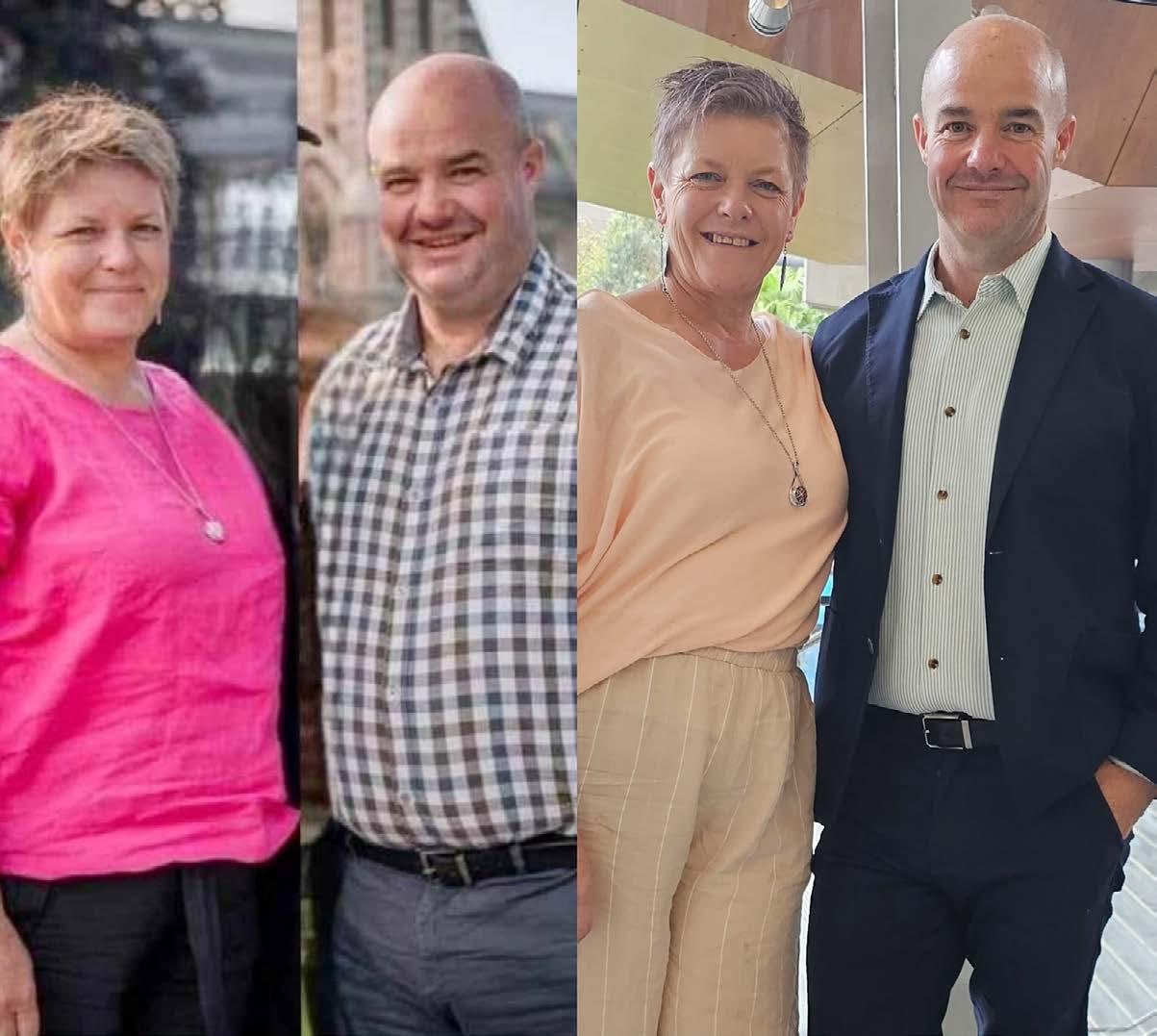
communities through investment in digital tools, helplines and the through the rollout of primary mental health and addiction services to general practices.”
However, government budget cuts mean job losses loom over the mental health services across the country, with the Ministry of Health cutting around 134 jobs. Those affected by these cuts are likely to be rural folk such as Herrick, who says he was more or less saved back in 2018 through friends and mental health services.
“I wouldn’t be here if it wasn’t for a particular person on a particular day,” he says.
“I was the good old classic southern man, take the concrete pill and harden the hell up and get on with the job. I never dealt with the issues.”
In 2018 during a very harsh winter Herrick felt work and life were out of his control. He remembers not being able to sleep at night because he was worried about how his farm would be perceived by neighbours because of Southland’s tough farming conditions.
I was not a very nice person to be around most of the time and alcohol had a huge part to play in that.
“Drinking just made things worse because you didn’t have control of what you were saying and what you were doing.”
As with any addiction, the next day was worse and so he would reach for another drink.
His partner Sandy was the spine of his family for much of that period.
“She has never been a huge drinker, in fact she stayed sober most of the time because I wasn’t. She had to make sure the family was safe, that she was safe and that I wasn’t going to make a huge jerk of myself.”
Having now farmed for 26 years and knocked alcohol on the head for four, Herrick has turned his life around.
“I very much protect myself in social situations when it comes to that sort of stuff. I have a lot more self-control now.
“I don’t miss it at all.”
The added bonus: Herrick is a shadow of his former self, walking around 71kg lighter.
“That was the huge turnaround for me in life, getting in control of my physical wellbeing and helping out my mental wellbeing.”
A rural Canterbury dairy farmer in her late forties, who asked not to be named, is now 20 years sober.
Since giving up drinking at 27, she’s met her husband and had three children.

If she had continued drinking she wouldn’t be here, she says.
“When I picked up that drink, I could not control the roller-coaster I was on. I wanted to control it, I wanted to enjoy it, but I couldn’t do both.
“I’d have a great night out, I think ... but I would black out every time. The next day I didn’t know what had happened, what I had said or who I was with.”
When her friends showed concern for her behaviour she made new ones, without taking a look at herself.
“I had gone to town wearing a wetsuit in Invercargill where I lived at the time. It was 6am and they were closing the bar. I was by myself, had no money and here I was arguing with the bartender because he wouldn’t sell me a bottle of tequila.
“I ended up vomiting, they sent me away in a taxi, and I was vomiting until lunchtime the next day. When I finally came to, I was suicidal.
“I do very clearly remember looking in the mirror at this 27-year-old who is supposed to be in the peak of her life. I just felt so disconnected and that my life was a write-off.”
She had to hit rock bottom before admitting that drinking was the centre of her pain.
“For me something went off. I thought before going down the suicide road, maybe I could get some help and maybe alcohol is the problem.”
It was sharing the shame and secrets at AA that got her confronting her issues and starting to heal.
“The shame and the fear, all of that fuelled the alcoholism. When you start sharing that, you put some light on it and it isn’t sitting there in the dark anymore.”
For every success story, however, there are the silent tragedies out there in rural New Zealand.
“In 20 years, I have watched a lot of mothers bury their alcoholic sons and daughters, I have watched children bury their alcoholic parents. It is horrendous and it is just more suffering till the end,” she says.
“I know one he’s in his seventies,
he’s in the cottage on the corner of the farm, pickling himself. It is tragic.
“It doesn’t have to be like that.”
Having spent close to 21 years sober, she says the key to breaking addiction is regular AA meetings and getting off the farm once a week.
“That one meeting a week, it means I can continue to show up as someone’s wife and someone’s mum, sober.
“Find your thing that you go off the farm for every week, just something.
“It doesn’t matter if it’s bowls, pottery or whatever it is that you are interested in. Just something that gets you out the gate every week.”
She and her husband have seen the downturn in dairying and every week are looking to see if the books can be balanced.
“It’s no ginger ale and skittles at all. It is hard, it’s like ‘How are we paying these bills?’ Eight dollars of payout now is not the $8 of payout from four years ago.”
But she says being sober gives her a clearer mind to deal with the hardships and remind her why she is there in the first place.
“When you are a farmer, you are intrinsically passionate about the land, the people of the land, the produce, the way of living and the connection to the seasons, to the animals, and to the earth. There is something very deep in that and it is bigger than one season of a bad payout.
“If it isn’t bigger than that, then you have probably left farming.”
NEED HELP?
AA is accessible to alcoholics in rural communities in New Zealand through:
In-person meetings
Online (Zoom) meetings
AA On Air (recorded) Meetings on its website
Access Radio
AA Online Shop
0800 Phoneline (0800 229 6757)
Email (help@aa.org.nz)
AA website (https://aa.org.nz/)
NZ’s business leaders have signalled that they want an end to ‘uneforceable and foolish rules’ on genetic engineering as a matter of urgency. Hugh Stringleman reports.
LOW morale, fatigue and anxiety are taking a toll on everyone in the food and fibre sector and industry leaders must step up to give people confidence to stay the course.
The 2024 KPMG Agribusiness Agenda has sounded a strong, sombre note echoing the major concerns of more than 150 sector leaders surveyed about their most important priorities.
Industry leaders are concerned about the looming threat of high-pathogen avian flu, capital constraints, changing market expectations, and low industry morale, the role of regulation, reframing the environment, oceans, food security, and climate transition, among other things.
But top spot in this year’s priorities list is the imperative for world-class biosecurity, followed by the need to act on the results of gene editing discussions.
A steady third on the list is the need for high-quality trade agreements followed by investment in resilient rural infrastructure and broadband access to all.
No 6 is public/private science partnerships and seventh is the need for water storage.
Eighth is resilient supply chains, then maximising the sustainable use of our oceans, while 10th is maintaining immigration settings.
KPMG global head of agribusiness Ian Proudfoot, coauthor of the Agribusiness Agenda, says the likely arrival of avian influenza has ensured biosecurity remains the No 1 concern.
As the covid pandemic illustrated, small things like washing hands and wearing masks did the most to protect us from infection.
“With the threats we face, it will be good farm management practices and hygiene standards that will offer the most protection.
“The last couple of years have been really challenging for many, with commodity returns plummeting, interest rates soaring, and the climate growing more unpredictable.
“The morale of people across the sector has been a significant concern, as was evident in its being the dominant discussion topic during the roundtable sessions and the conversations led by the emerging leaders.”
The call for action on gene editing technologies jumped from sixth last year to second.
Leaders surveyed cited the potential to protect biodiversity and control predators, not just enhancements to productivity.
“One emerging leader says we cannot let uncertainty continue for another five years,” he says.
A well-thought-through and accepted position is now urgent.
To ensure our competitiveness,

CONCERNS: KPMG global head of agribusiness Ian Proudfoot, co-author of the Agribusiness Agenda, says the likely arrival of avian influenza has ensured biosecurity remains the No 1 concern for agribusiness.

FUTURE: The need to act on gene editing discussions is among the top priorities for industry leaders, according to the latest KPMG Agribusiness Agenda.
we can’t continue to have “unenforceable and foolish rules” when the science now means it is impossible to tell whether a product has been edited or not.
KPMG found that the focus on climate transition had fallen off the radar for many industry leaders after a year free of major climatic events.
Our location in a region of the world exposed to more extreme weather events means there can be no complacency that we have another decade or two before another Cyclone Gabrielle.
Banks and insurance companies are already using geospatial and climate data in decisions about who to do business with.
The world is facing unprecedented volatility, even to the potential extent of a third world war in which we could quickly lose access to markets and our fuels and fertilisers.
“Life is currently tough for all producers as their costs have gone up at the same time as their prices have come under pressure,” Proudfoot says in his introduction.
“The message from many of my colleagues around the world is that
life is getting so difficult for some producers that they are looking at their options to exit.
“What do we need to keep farmers farming and growers growing?”
Proudfoot put forward sustainable increases in revenue from added value rather than riding commodity prices up and down.
What do leaders across the food and fibre sector need to do to keep the farmers farming and the growers growing?
Ian Proudfoot KPMG
Farmers must also be compensated for ecosystem services to society with markets that allow trading in biodiversity, fresh water or soil credits.
He called for circular business models that utilise biomass or coproducts to replace fossil fuels.
“It is our view that every food company will become an energy
company and this is critical to ensuring the financial resilience of producers.”
Anaerobic digesters are everyday installations around the world along with the food, fibre, fuel triple play.
“This is not yet the case here, suggesting we are complacent or missing a trick,” he says.
The discussion on using new generation biotechnologies needs to be concluded urgently so farmers can consider tools to enhance production systems.
New, lighter chemicals and animal health remedies are not brought to NZ because the time and costs of securing approvals are not justified by our market size.
“We are becoming an innovation backwater at the bottom of the world that is too difficult to deal with,” Proudfoot says.
NZ producers already consider themselves resilient and they are looking for a hand up, not a hand-out.
“Food and fibre producers have come through droughts, biosecurity incursions, pandemics, floods, labour shortages, border closures, cyclones and a whole range of other challenges.
“Yet they continue to deliver the results that have kept the NZ economy functioning.”
The volume of comments about regulation was lower this year, the KPMG Agribusiness Agenda says.
The more relaxed tone is undoubtedly due to the coalition government’s commitment to eliminate the perceived regulatory oversteps of the previous government.
Nonetheless, guardrails that clearly identify inappropriate practices are critical to protecting the investment made by all participants in the sector.
“The best regulation works well, is low cost to implement, and doesn’t load significant incremental operating costs.”
Delays in getting regulatory approvals have prevented NZ companies from getting leadingedge products that are already available elsewhere in the world.

Follow us

are more reasons

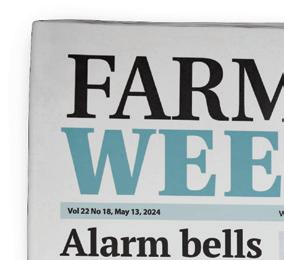

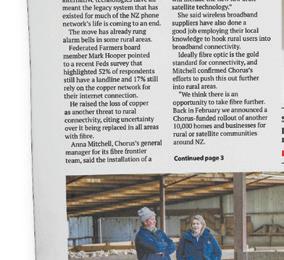

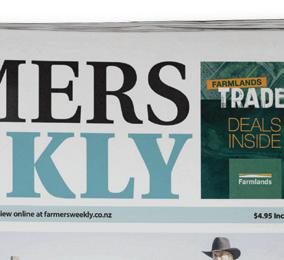

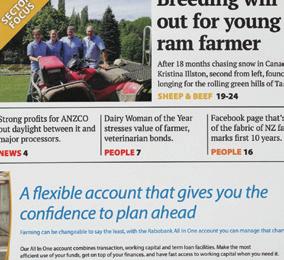

















News. Insights. Analysis. The Farmer’s Voice. Opinion. Special Reports. Features. People Stories. Technology. Dairy Focus. Sheep & Beef Focus. Horticulture Focus. Arable Focus. Ag&Ed. AgriStars. Federated Farmers News. World News. Real Estate. Livestock. Marketplace. Jobs. Sale Yard Reports. Market Snapshot. Weather. Advertisements and Catalogues.





“ I read it all the time and look forward to it every week. There’s a lot of good stuff in there and a really good cross section of opinions. Alan Emerson is very good – well researched. I think you have some great stories and the fact you’re also including Beef+LambNZ and the others too. It’s a good read.”
Brent Mountford President of Bay of Plenty Federated Farmers. Sheep & beef farmer, Matata, WhakataneTesting of grass seed lines for levels of viable endophyte has also ramped up in volume in recent years.
CAROLINE Mouton felt at home when she stepped inside a seed testing laboratory for the first time in New Zealand just over three years ago.
The need for precision and consistency in seed testing appealed to her after her previous work experiences while living in South Africa.
Before emigrating to NZ in 2019 and settling in Christchurch, she worked for South Africa’s Department of Agriculture as a quarantine inspection officer, and later set up her own private diagnostic laboratory offering nematode and grapevine bud mite analyses.
After focusing on her family for the first year after arriving here, it was time to return to working and she secured the laboratory manager role at PGG Wrightson Seeds, a member of the NZ Plant Breeders & Research Association (PBRA).
“It was actually a tough time in NZ because it was just after the first covid lockdown. But the role appealed, especially because they were looking for someone with strategic planning experience to expand the lab too,” she said.
“I had to overcome some initial fears that I didn’t know much about seed testing. It has been a steep learning curve for me, but I really enjoy the work.”
Ensuring the laboratory surpasses the standards required for accreditation by the International Seed Testing Association (ISTA) is a key responsibility for Mouton.
“The ISTA accreditation is really a cornerstone of our credibility and our quality assurance to customers. “
I think the biggest juggle for me is probably balancing my time for working on that strategic vision with all the intricacies of our daily operational tasks.
Caroline Mouton PGG Wrightson Seeds
“This involves staying updated with the latest developments and requirements for seed testing as well as continuously enhancing my own and our team’s skill set to meet industry standards.“
The PBRA encourages its members to maintain strong relationships with other seed industry organisations, nationally and internationally. ISTA accreditation ensures a high standard of testing accuracy and reliability and is regarded as an essential tick of approval for seed labs globally.
The lab’s output rises sharply as the seed harvest phase of the year progresses and lines arrive for testing to help establish the order they will be dressed, prepared for sale and sowing within a few weeks.
Endophyte test results remain valid for six months before retesting is required, while germination test results are valid for 12 months. Re-testing of carried-

over lines is required to have them ready for sale throughout the year.
The laboratory is also testing grain lines and recently began providing testing services for maize seed for a PGG Wrightson Seeds subsidiary, Corson Maize.
“I think the biggest juggle for me is probably balancing my time for working on that strategic vision with all the intricacies of our daily operational tasks.”
meet for an annual catch-up.
“External training is probably one of our biggest constraints. There’s no institute or authority that delivers training to seed analysts and provides a qualification structure.”
Any new technologies must be approved by ISTA and undergo monitoring similar to that of a human analyst before they are eligible for installation by laboratories

In her time as lab manager, Mouton has overseen the introduction of a new operating system for more efficient management of the testing results.
She said keeping pace with advances in technology and testing methodologies is essential for maintaining the quality and reliability of the laboratory’s seed testing services.
However, acquiring and implementing new technologies can be costly and training staff to use them effectively can be challenging.
“A good example is the speeding up of testing using artificial intelligence, particularly using hyperspectral imaging to assess seed samples,” she said.
This technology is increasingly being used in seed testing and holds the potential to replace the more tedious manual counting of seeds when assessing sample purity, typically viewed through a small hand-held lens.
The Kimihia Research Centre laboratory has integrated modern technologies such as digital microscopes and workstations, enabling analysts to work ergonomically while viewing seeds on large monitors. These modern technologies are transforming the way seed analysts are working. Staff reporter
Testing seed lines for germination, purity and vigour provides a large amount of work for the lab’s 14 full-time staff.

With barely any external training provided, most training is done internally. Mouton said staff training is a regular topic for discussion when seed testing teams from all the NZ laboratories



She met her New Zealand partner, who was travelling through the United Kingdom at the time, “and the rest is history”.
CHARLOTTE Tumilson works at the commercial edge of plant breeding.
The intellectual property (IP) and commercial manager at Grasslanz Technology Limited (GTL) emigrated to New Zealand six years ago after completing a PhD in molecular biology in the United Kingdom and starting a career as a patent attorney in London.
After a couple of visits to NZ, Charlotte joined her partner, Riki Burgess, who is managing Lincoln University’s Ashley Dene research and development station south of Christchurch.
Building her knowledge of farming and plant breeding was a steep learning curve for the self-confessed “city girl” with no previous connection to agriculture.

“My first link to farming was when I met my partner who’s been a dairy farmer since he left school, and then joining GTL. It was just a whole new world to me, but it’s been really great.
“Having that science background means that I can understand what our researchers are talking about and tease out the information that I need in order to manage the protection of our work.”
Apart from managing the IP protection strategy for the company’s endophyte development programmes, Tumilson also handles the registration of plant variety rights for cultivars coming from GTL’s joint ventures in NZ and other countries.
She likes the variety of work her role delivers and is particularly enjoying managing the international plant variety applications using the NZ trial data that supports each cultivar.
The NZ results help GTL to describe the stability, distinctness and uniformity of each cultivar, which ultimately feeds into their protection for GTL and in some cases, its partners.
“I guess it’s a little bit of the scientist in me because I love handling data,” Tumilson said.

others accessing a product so the company that developed it can make higher profits.
“But it’s actually aimed at protecting the investment made in the research and development, which can take years to complete, and making a return on that investment so that we can reinvest it in future technologies.”
She also looks after most of GTL’s contractual agreements, covering leasing land for trial sites through to research partnerships and licensing.
Having that science background means that I can understand what our researchers are talking about.
farmers maintain or grow profits from fewer synthetic chemical inputs.
“No two days are the same in my role,” she said. Staff reporter
She said she feels many people mistakenly believe IP protection is just intended to prevent
Looking ahead, Tumilson is excited by the opportunities for the plant breeding industry to create and deliver innovative cultivars that mitigate the impacts of climate change and for research into microbial solutions to help
She enjoys being part of a small agile team of 14 staff that can move quickly to capture opportunities when demand shifts occur.

THE New Zealand arable industry is gearing up to celebrate its innovators and heroes and reward excellence in the sector’s annual showcase awards.
Federated Farmers arable group chair David Birkett said the industry is excited to bring the arable awards of NZ to life in an event put together for industry, by industry.
Federated Farmers, the Foundation for Arable Research (FAR), United Wheatgrowers (UWG) and the Grain and Seed Trade Association (NZGSTA) band together to make the NZ Arable Awards a showcase of the sector’s people and products, recognising, celebrating and rewarding excellence.
“These awards are about celebrating achievements and inspiring others.
“We are really proud of our people, a lot who are very humble and like to go under the radar, so this is promoting what our people do, really great work.
“This is arable’s time to shine and to celebrate those who have,” Birkett said.
Nominations are closed and the task of selecting finalists is underway, with the finalists
named next month ahead of the awards dinner in Christchurch on August 15.
“We have a good number and high calibre of nominations across all categories so it’s going to be a testing time selecting the finalists.”
The seed was planted for the awards in 2017 when it was recognised that there was a need to celebrate the successes in the arable sector.
Feds launched the Arable Grower of the Year at this time. UWG was already running wheat grower awards.
“It then become apparent there was a need to become bigger and better and this has happened with the four arable bodies, Feds, UWG, FAR and NGSTA, joining together for what is now the third annual industry awards.”
The arable industry tallies $1 billion of farmgate sales annually

with the seed sector alone increasing volume more than 40% in the past five years to more than 85,000 tonnes.
“To quote, it all starts with seed, meaning arable is directly supporting the $30bn pastural sector and as well the pig and poultry sectors.”
This year the awards will introduce the industry’s Hall of Fame, to honour individuals who have made a significant contribution to the arable industry.
The inaugural inductees will be announced at the awards dinner.
We are really proud of our people, a lot who are very humble and like to go under the radar.
DavidThe Arable Farmer of the Year has been tweaked to now be judged from the three winners of the Seed, Grain, and Maize Grower of the Year categories.
The overall winner will be the arable farmer who best represents the NZ arable industry’s characteristics of productivity, adaptability, sustainability and collaboration.
A total of seven industry champions will be recognised,
including the Arable Farmer of the Year; Maize Farmer of the Year; Seed Grower of the Year and Grain Grower of the Year.
Other categories include the innovation award recognising researchers, plant breeders, farmers, either individual or team, whose development of innovative research, technology, product development or marketing has added value to the industry.
The positive environmental impact award recognises an arable farmer who has addressed an issue of environmental concern within their business.
The agronomist of the year is looking for someone who has up-to-the minute knowledge of crop options and agronomy and goes above and beyond to help growers to solve problems and produce high quality profitable crops.
The final, and new category this year, is the working together award recognising a group of growers that has collaborated to gather, document and share information aimed at improving the long-term viability of their arable businesses.
Birkett said tickets for the awards dinner are selling now and with last year’s event having sold out, “buy now and don’t miss out”.
MORE: To purchase tickets go to: https://www.arableawards.co.nz/

WE’RE GROWING.
We’ve extended our tractor line-up with all-new models handpicked for the conditions here in New Zealand. We’ve expanded our dealer network to offer you more purchase opportunities and aftersales care. And we’re only just beginning. Ask us how we can help you achieve your farming goals and let’s grow together
 Annette Scott PEOPLE Education
Annette Scott PEOPLE Education
THE New Zealand Grain and Seed Trade Association is set to plant the seed and grow the next generation of industry leaders.
Taking its name from the part of a plant embryo that develops into a root, the Young Radicles programme will actively encourage and nurture talented young people in the seed trade.
The programme is to be launched at the NZGSTA Conference 2024.
“Our goal is to bring these emerging professionals together, fostering collaboration and knowledge-sharing,” NZGSTA general manager Thomas Chin said.
The objectives of Young Radicles include promoting a vibrant cohort of young seed professionals who actively engage in NZGSTA industry affairs.
“This includes participation in business sections, technical meetings, and events such as forums and annual conferences.
“We invite NZGSTA member principals to lend their support, both financially and through mentorship, to encourage their talented young staff members to
actively participate in the NZGSTA conference and its associated business group events and social sessions.”
Young Radicles is looking at engagement with people under 45 years of age.
“If you have staff members under the age of 45 working in any capacity within the seed trade, we strongly encourage their attendance at the upcoming grain and seed industry conference.
“It’s watch this space for more details.”
Our goal is to bring these emerging professionals together, fostering collaboration and knowledge-sharing.
Thomas Chin NZGSTAThe NZGSTA conference will be held in Christchurch in November.
Meanwhile the Foundation for Arable Research is on the lookout for its 2025 graduate programme.
FAR provides graduate training for one graduate interested in a career in the arable sector, “the industry that feeds New Zealanders and underpins vital pastoral industries”.
The graduate programme has been designed to introduce all aspects of the industry from research and agronomy to marketing.
It targets university graduates with a degree in science, agriculture or agricultural commerce and looking for a career working with some of the world’s best cropping farmers.
The programme takes in all aspects of the NZ cropping industry with opportunities to be involved in field research from design to results’ analysis; spend time with experienced agronomists and internationally recognised researchers and make connections in the cropping industry throughout NZ.
The 18-month programme provides time to get involved in planning, carrying out and analysing a range of arable research projects and to spending time with cropping businesses across NZ.
A competitive salary is offered with assurance that at the end of the programme the successful graduate will have developed a good knowledge of all the factors driving the NZ arable industry.
There is no guarantee of employment with FAR at the end of the programme, though all previous graduates have found employment in the industry.

Applications close on August 2 2024.
FAR also has an opening for an associate director.
This is a development opportunity for a future leader to join the FAR board and gain experience in governance, leadership and strategy while bringing their own arable knowledge and experience to the board table.
The associate director will also have the opportunity to be
mentored by an industry leader and receive a contribution towards governance training.
This is a non-voting role, but the board does seek full participation in meetings.
Applications close on June 28, 2024.
MORE:
Both the associate director and graduate programme application forms can be found on FAR’s website –www.far.org.nz
 Annette Scott TECHNOLOGY Fertiliser
Annette Scott TECHNOLOGY Fertiliser
ARABLE growers are investigating alternative sources of nitrogen to reduce their crop reliance on synthetic nitrogen.
Hefty increases in the price of synthetic nitrogen, coupled with the likely introduction of pricing for nitrogen fertiliser-related nitrous oxide emissions, has led farmer groups in Canterbury and Waikato to look at different ways to supply nitrogen to their crops.
The Alternative N groups were formed as part of the Foundation for Arable Research (FAR) Growers Leading Change (GLC) programme.
The Canterbury group focused on cereal crops while the Waikato group concentrated on maize.
In the 2022-23 season, the Canterbury group tested a seaweed-based product containing a range of amino acids, applied in combination with reduced applications of synthetic nitrogen, to gauge whether this would provide the same yield as a standard nitrogen application.
The product was tried in autumn-sown wheat in seven paddocks over six farms.
The on-farm experiments are known as try-outs, rather
than trials, as they are not fully scientifically replicated, but still provide a useful indicator for growers.
Canterbury GLC Alternative N group facilitator Donna Lill said the results showed no significant differences in yield between the standard and biological treatment.
However, greenhouse gas
emissions, a key driver for the project, were lower with the biological treatment because of the 30% reduction in urea.
Growers are now experimenting with nitrogen-fixing faba beans to see how much nitrogen these provide cereal crops.
Faba beans have been planted as either a cover crop that was
terminated when the autumn cereal was sown, or together with the autumn cereal as intercropping.
They are also investigating the nitrogen use efficiency of three different types of urea application on a cereal crop – liquid to soil, granular and foliar.
GLC group member Brent
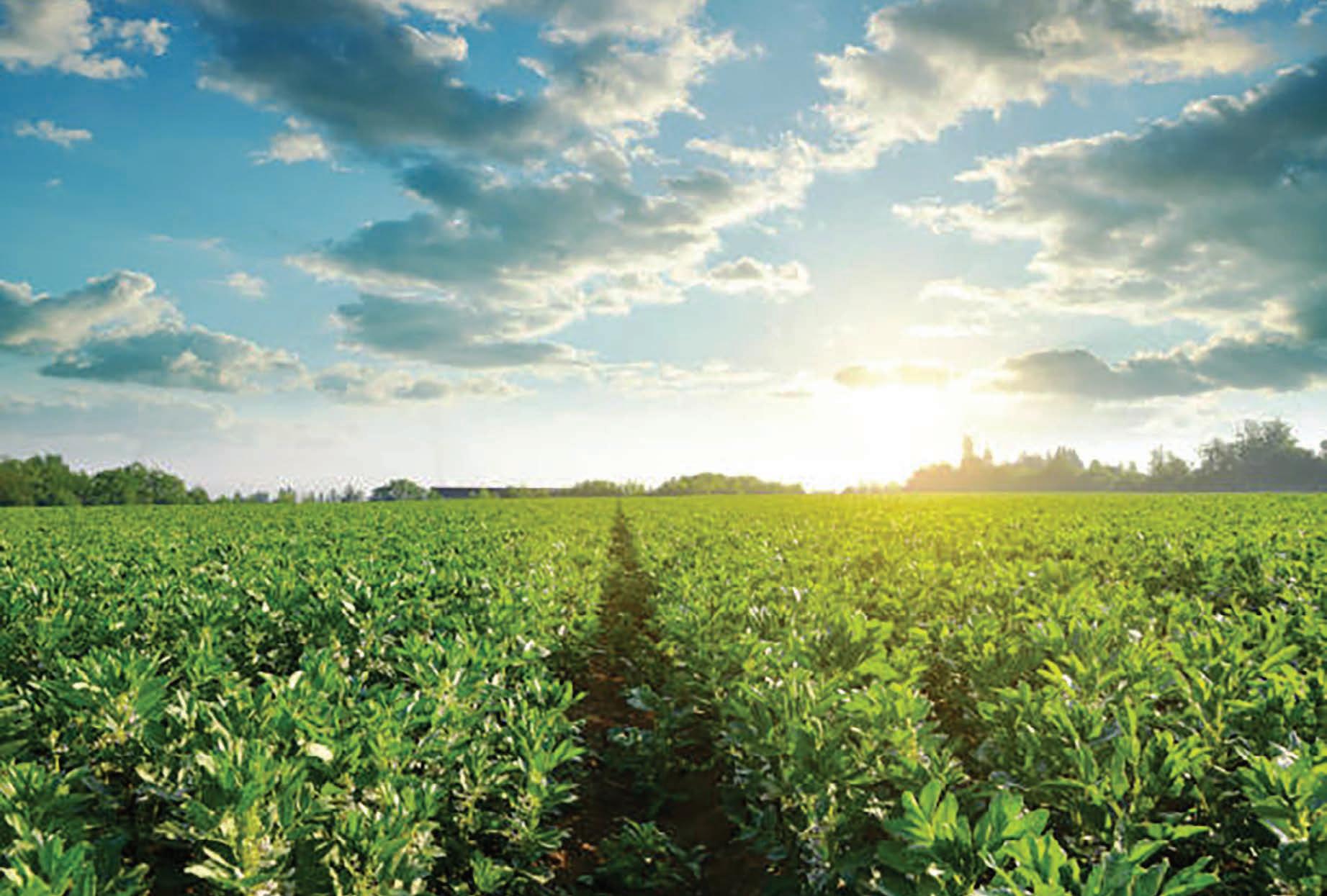
Austin, who farms at Lismore, near Ashburton, is growing faba beans both as a short-term autumn cover crop and with wheat and barley, to gauge what nutrients these provide to the growing crop.
He has applied liquid nitrogen on all his crops for the past four years.
While he would have potentially tried these things anyway, he said the amount of soil testing undertaken with being part of a GLC group is a bonus.
Talking to other farmers involved with the group is also important.
Brent Austin Lismore
The group also generates a lot more useful data than an individual farmer can do alone.
“It’s also going and seeing other farmers’ try-outs and what they are doing. Talking to other farmers involved with the group is also important.”
In Waikato, growers are testing alternative nitrogen products, chicken manure, dairy effluent, composted dairy effluent and winter legumes, in combination with synthetic nitrogen to determine their impacts on maize yield.

Federated Farmers have welcomed a decision to immediately disband the failed and untenable He Waka Eke Noa partnership.
On the eve of National Fieldays, the Government announced it will be removing agriculture from the New Zealand Emissions Trading Scheme (NZ ETS).
He Waka Eke Noa has been shown the door, to be replaced by a new pastoral sector group to constructively tackle biogenic methane.
Federated Farmers president Wayne Langford says the Labour Party’s He Waka Eke Noa process failed miserably and needed to go.
“The previous Government were too focused on pricing farmers, driving blindly towards unachievable, political, unscientific methane reduction targets,” Langford says.
“There was a complete disregard for the significant and unjustifiable costs this would place on hardworking farming families and the wider New Zealand economy.”
He says Federated Farmers would never accept a plan that would see 20% of sheep and beef farms, and 5% of dairy farmers, priced out of existence.
“We have three firm bottom lines when it comes to climate policy: that methane targets are reviewed; that viable and cost-effective tools are available for farmers; and that no emissions leakage occurs,” Langford says.
“We made it clear from day one that we were unwilling to
compromise on those bottom lines.
“As soon as it became clear He Waka Eke Noa wasn’t going to be able to meet those bottom lines, we walked away from the negotiating table.”
Langford says it’s great to see those three things explicitly reflected in the Government’s June 11 announcement.
“That gives us a lot of confidence for the future.”
Agriculture Minister Todd McClay says the primary sector worked collaboratively for years, but Labour rejected many of its proposals, “compromising consensus, relationships, and confidence across rural New Zealand”.
Cabinet’s decision to formally disestablish He Waka Eke Noa with immediate effect would restore confidence, McClay says.
“It’s time for a fresh start on how we engage with farmers and processors to work on biogenic methane.”
To do this, the Government will engage directly with levy bodies and sector organisations representing the pastoral sector: Federated Farmers, DairyNZ, Beef + Lamb New Zealand, Deer Industry New Zealand, Dairy Companies Association of New Zealand, and the Meat Industry Association.
The Government says it will invest further in research and development to create practical tools to help lower on-farm emissions while protecting production.
Climate Change Minister Simon Watts says the Government has

As soon as it became clear He Waka Eke Noa wasn’t going to be able to meet those bottom lines, we walked away from the negotiating table.
Wayne Langford Federated Farmers president
committed $400 million over the next four years to accelerate the commercialisation of tools and technology.
That includes increasing funding for the New Zealand Agricultural Greenhouse Gas Research Centre, which will receive an extra $50.5m
over the next five years. Projects include the development of a methane vaccine; breeding loweremissions cattle; and accelerating work on methane and nitrous oxide inhibitors.
Langford says it’s great to see the Government clearly acknowledge that Kiwi farmers will need tools and technology to reduce emissions without reducing production or exports.
“The Government have also acknowledged that it makes no sense to send jobs and production overseas, while less carbon-efficient countries produce the food the world needs.”
Langford says the Government have already publicly committed to
a review of the current unscientific methane reduction targets later this year.
Establishing the new pastoral sector group presents an opportunity for a fresh start for discussions about climate policy and biogenic methane, he says.
“We look forward to discussing this further with the Government as Terms of Reference are developed.”
Associate Minister of Agriculture Andrew Hoggard says it’s critical New Zealand’s efforts to cut emissions don’t harm our local agricultural sector.
“Agriculture is the backbone of our economy and maintaining its profitability is pivotal to boosting our GDP, raising the standard of living, and providing the highquality public services Kiwis deserve,” Hoggard says.
Meanwhile, Associate Minister of Agriculture Mark Patterson says, by working closely with the sector, the Government will ensure consumer expectations are met and that we continue to lift New Zealand’s sustainability credentials.
“This Government will futureproof our export growth to ensure the success of dairy and sheep and beef farmers who produce highquality protein, which is sought after by customers all over the world,” Patterson says.
Langford says Federated Farmers will continue to advocate strongly on behalf of grassroots farming families and rural communities for climate policy that is fair, scientific and affordable.


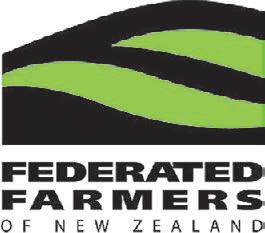
Emerging technologies are set to transform remote farming operations by allowing animals to be managed increasingly as individuals, Gallagher’s head of new ventures says.
Sarah Adams says the future of farming lies in greater precision –getting the most out of every animal and resource in the farm system.
“I think where we (technology providers) can help is by giving farmers tools not just to make compliance easier, but to bring precision into remote pastoral situations like we’re seeing in dairy and cropping operations,” Adams says.
“Currently in extensive farming, we
FUTURE FOCUSED:
Sarah Adams, Gallagher’s GM of global strategy and new ventures, says greater precision will result in more sustainable and profitable farm operations.
don’t see our animals every day.
“We don’t know what they’re doing, and we manage them usually as mobs, but there are a whole lot of technologies that will enable us to manage them as individuals.”
Adams, who recently spoke on the Federated Farmers Podcast, says technologies like virtual fencing, which involve animals wearing a neckband or collar, will increasingly provide opportunities beyond just an alternative to physical fences.
“Wearables are going to tell us so much more about animals.
“The reason virtual fencing is a really good opportunity is because, not only will we know things about animals from the accelerometer data, and the behavioural information,

but we can actually do something about it.
“We can know how animals are
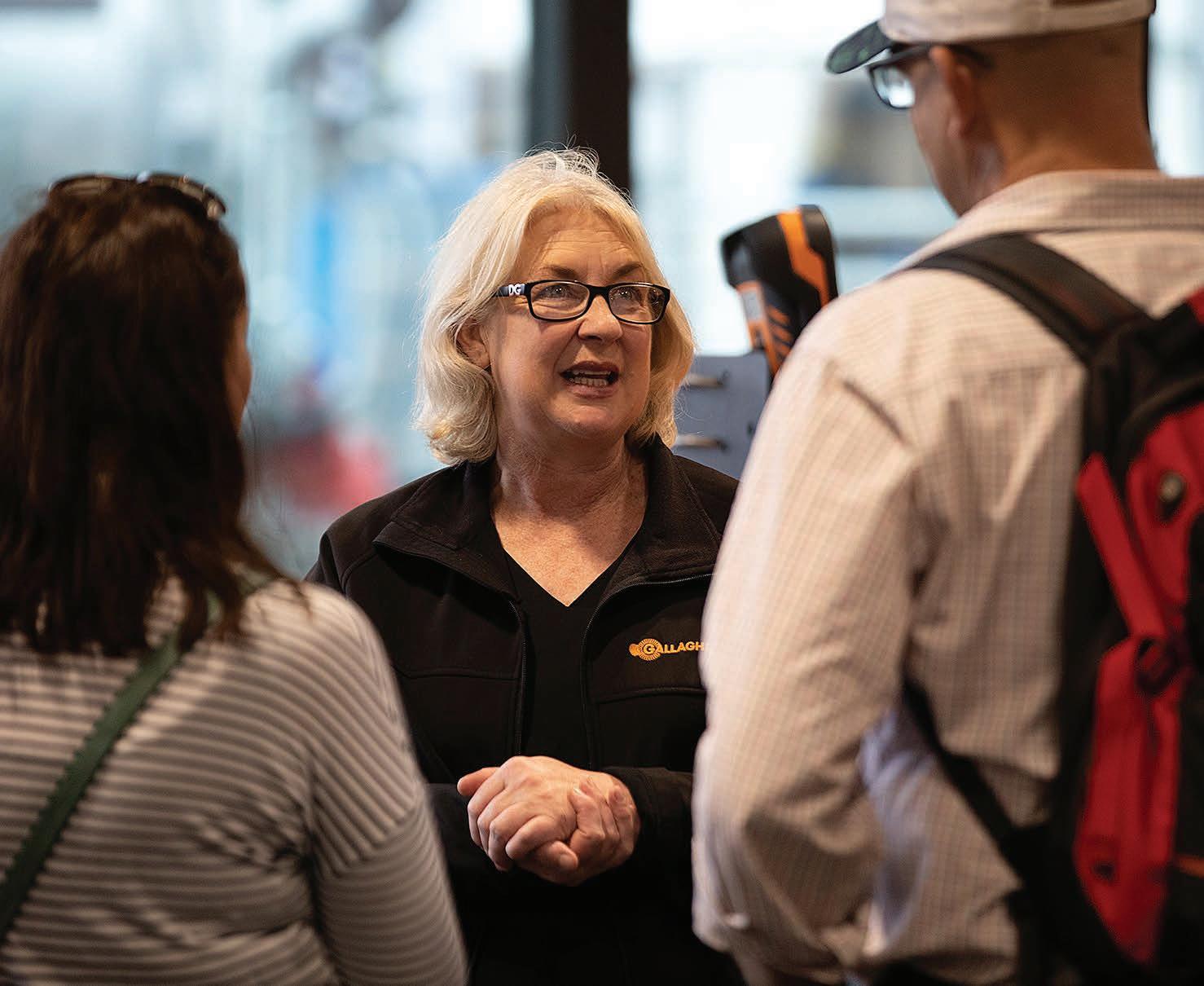




performing within a herd, and then we can feed and manage those animals to their optimum as individuals rather than as a mob.”
Greater precision will result in more sustainable and profitable farm operations, she says.
“It’s about taking that wastage out and then really improving profitability and the production of those animals to be able to reduce things like greenhouse gas emissions.
“If we can get animals to market faster, we’re reducing the time they’re on properties, so there’s a big reduction in greenhouse gases. Technology will be one of the tools we can use to help with that.”
Adams says camera vision is another technology that will make a big difference on remote farms.
“I think we’ll start seeing a lot more of how we can use camera vision in farming operations, maybe to weigh animals, count animals, and know what’s happening on the farm.
“It could be used within a drone or as cameras at different spots on the


We can know how animals are performing within a herd, and then we can feed and manage those animals to their optimum as individuals rather than as a mob.
Sarah Adams Gallagher Global Strategy and New Ventures Manager
farm. That’s something we need to learn more about.”
Key to making these technologies available to farmers will be affordability, simplicity of use, and better connectivity, she says.
“Having a way to transmit the data – different ways of communicating, like satellite and cellular – in a very cheap way is going to be the way of the future.”
MORE:
Listen to the full interview with Sarah Adams at fedfarm.org.nz/podcast


From north to south, Federated Farmers provincial presidents are calling on their local MPs to step up and back the organisation’s calls for a rural banking inquiry.
“Our local rural communities are really hurting at the moment and banking issues are their numberone concern,” Federated Farmers Southland president Jason Herrick says.
“Banks are making record profits but many of our farming families are struggling to make ends meet under the weight of rising interest rates and low payouts.”
Herrick says supporting an independent inquiry into rural banking should be a “no brainer” for any rural politician, no matter their political stripe.
“Supporting an independent inquiry into rural banking costs them nothing,” Herrick says.
“We aren’t sitting here asking for a handout. We’re just asking for Parliament to take a closer look at our rural banking system to make sure farmers are getting a fair deal.”
At the other end of the country, Federated Farmers Northland president Colin Hannah says high interest rates and low payouts are particularly affecting young farmers.
“Our contract milkers and lower order sharemilkers are the future in Northland. High interest rates are really knocking these young people.”
Hannah says farmers want to know their local MPs understand the pressures they’re under – and that they’re doing something about it.
Northland Rural Support Trust’s current support list is about three times above normal levels for this time of year.
“It’s telling that more than 50% of calls to the RST for support are around financial and banking issues,” Hannah says.
“It’s clearly weighing heavily on farmers’ minds.
“Farmers want to know why their interest rates are so high compared to those living in town, and how the

banks are able to justify that.”
Hannah says he’s received calls from farmers refused temporary loans to meet their provisional tax to the IRD, “which threw them into real panic”.
The nature of the industry means farmers’ revenue is seasonal in nature and many run overdrafts until the money comes in. But some banks are charging overdraft interest rates as high as 18%.
“That’s just profiteering from a sector that’s under the pump at present,” Hannah says.
“Farmers’ confidence and willingness to invest is really being knocked by questionable bank tactics and profit gouging, and it will end up costing the Northland economy.”
North Canterbury president Karl Dean says the banks are doing a huge disservice to agriculture, and to the local economy, by leaning on farmers to pump up their profits.
“North Canterbury’s sheep and arable farmers, in particular, have
more than enough challenges on their plates at present without getting grief from their banks.
“The feedback I’m hearing from farmers is that banks are becoming stricter on how – or even whether –they’ll lend.”
Dean expects Canterbury’s MPs to back the call for an inquiry.
The continuing drought in the Hurunui District, worries about feeding animals through winter, poor returns and high farm input costs, are affecting farmers’ mental health, he says.
“The higher interest costs farmers pay compared to someone with a big mortgage on a house is out of whack, and just adds to that stress.
“As a business, you expect to pay more but you don’t expect as much extra as some farmers are being asked to cough up.
“We’ve got legitimate questions about rural banking and whether there’s sufficient competition.
“It’s essential an independent inquiry is launched to get answers –
North Canterbury’s sheep and arable farmers, in particular, have more than enough challenges on their plates at present without getting grief from their banks.
Karl Dean Federated Farmers North Canterbury president
and hopefully change,” Dean says.
Manawatu-Rangitikei president Ian Strahan says an independent inquiry should be a non-partisan issue that politicians from across the spectrum can support.
“Backing an independent inquiry into rural banking would mean the world to our local farming families, who are really hurting,” Strahan says.
Farmers are asking fair questions and deserve some straight answers, he says.
“In particular I think an inquiry
needs to consider whether there is enough true competition in our rural banking system, and how banks treat farmers once their business becomes distressed.
“There also needs to be a very close look at things like the Reserve Bank’s capital requirements and the effect they’re having on the interest rates farmers pay,” Strahan says.
Federated Farmers’ May 2024 Banking Survey showed the number of farmers satisfied with their banking relationship has nose-dived from 80% five years ago to just 51% today.
The survey also found a record high number of farmers feel they have come under undue pressure from their banks
Alarmingly, only one in five farmers feel they have been adequately supported by their banks during this time of high interest rates.
Parliament’s Primary Production Select Committee is currently deliberating whether to launch a full probe into rural banking.

Fostering



Farmers may be finding more favour under the new Government but now’s not the time to ease back on the advocacy battle, Federated Farmers’ West Coast president warns.
Simon Cameron, who stepped into the role of provincial leader last month, says the risk of complacency creeping in is at the top of his mind.
“It’s good to see the coalition Government making some progress on winding back rules brought in under Labour that completely ignored farming practicalities and undermined private property rights.
“Farmers are in a better place for it, but we can’t sit back.
“Federated Farmers’ work is as important as ever and we’ve got to keep it well-resourced to fight our battles. That means we need more members.”
Cameron says it’s also important for Federated Farmers to keep the lines of communication open with all the political parties, not just farmers’ traditional allies.
“There is a danger in thinking, ‘okay, new Government – all our problems are going to melt away’.
“With the speed that change is happening, Feds really needs to pay attention to the details to make sure we’re getting it right.
“We don’t want to undo so much, so fast, that when we do have a change of Government again – and we will at some point – their backs are up, and we get stuck in this backwards and forwards from one extreme to the other.”
ck
Freshwater rules are an example, he says.
“I think we should keep the focus on our catchment groups, and just how important they are for locally led solutions.
“Where we might be lagging a bit, farmers and the wider community need to put their hands up.
“We need to be able to prove into the future that what we’re doing is maintaining or enhancing water quality.”
The Haast beef farmer says he knows as well as anyone that regulations under the previous Government’s Essential Freshwater package were riddled with costs and impracticalities for farmers.
Cameron led the charge – and won a part-concession – fighting stock exclusion rules on the West Coast.
“It was absurd that farmers who’d run low numbers of cattle on river flats for decades would have to fence rivers that regularly flood or change course.”
It was that kind of issue that drew the 31-year-old to Federated Farmers, and leadership roles.
“Silly regulations were coming at us thick and fast.
“I didn’t see the point of just sitting around worrying about it. I wanted to be involved and get in front of the decision-makers.”
Cameron was elected Federated Farmers West Coast meat & wool chair two years ago, and then national meat & wool vice chair last year.

Farmers are in a better place for it, but we can’t sit back.
Simon Cameron Federated Farmers West Coast president
He became West Coast president after Bede O’Connor stepped down.
“I’ve always admired Bede’s ability to bring a different view to the table and be respectful of others’ opinions.
“He’s done some great things for the West Coast.
“It’s a hard province to lead because it’s so spread out.
“Frano Volckman, our new vice president, is in Karamea and I’m in Haast. It’s an eight- or nine-hour drive to go from my farm to his.”
Cameron also acknowledges local
MPs Damien O’Connor and Maureen Pugh for their help and going out of their way to introduce him to other ministers and MPs.
Cameron grew up on Puhi Peaks Station near Kaikoura, the highest freehold property in the country at 500-2440 metres above sea level.
As well as the sheep and beef operation, he helped his dad run a hunting sideline, including hosting American visitors chasing that elusive trophy head.
His other passion is aviation.
He helped fund his training as a helicopter pilot by trips across the Tasman to work long hours on tractors during seeding and harvesting periods.
An opportunity came up to work in wild venison recovery on the West Coast.
He there met his partner Courtney and they farm part of her family’s
farm and their own 890ha property, with six-month old Pippa also keeping them busy.
Cameron’s dream is to combine farming, continue running guided hunting trips, and to work for a local helicopter company. He’s booked to sit his commercial helicopter licence later this year.
He has long admired former All Black great Richie McCaw’s motto: ‘Get up and be present’.
“I like that. No matter how hard you’ve been hit, or whatever the loss, get up and be present,” Cameron says.
“I think that’s something for us farmers too. We’ve had regulation pain and now there’s financial pain, but I think it’s important to get up, be present, look out at our work ‘office’, enjoy that natural environment and support each other.”
Come and celebrate 100 years with us.
We will be gathering on 20-21 July 2024 to commemorate the 100th anniversar y of Flock House opening For anyone with a passion or link to its histor y we would love you to join us.
20-21 July 2024







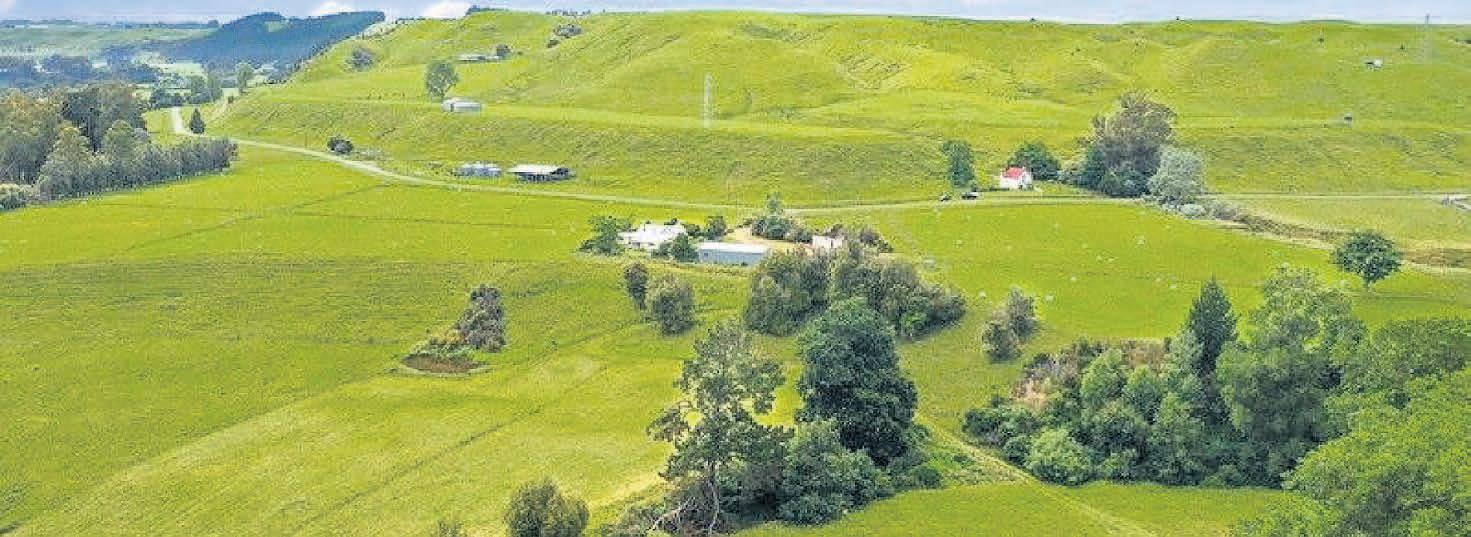

Nestled in a Micro Climate
Located approx 20min (21km) from Feilding 25.899ha finishing/lifestyle property that would suit a range of farming options. Cropping, dairy support, sheep and beef. The soil types on the top roadside terrace are Kopua stony loam complemented with Kairanga silt and clay loam on the bottom flats which support this farming enterprise. Contour is mainly flat with some small sidlings. The Kiwitea stream forms the back boundary. New cattle yards, 3-wire lane-way make easy management A three bedroom character homestead, with two lounge areas and large kitchen area. RV $1,425,000






Located in the highly regarded Seafield-Pendarves farming area 24 km from Ashburton, we are privileged to offer for sale this significant 197.15 ha landholding Held in family ownership for over a century, a unique opportunity presents itself for strategic acquisition of this title and farming unit The farm has a traditional farm management history of sheep breeding and finishing lambs on mixed pastures with winter/summer greenfeed and lucerne. With current infrastructure the property is not overcapitalised which along with universal Lismore soils provide the platform for simple conversion or development to any future land use. Astute purchasers will identify the opportunities available


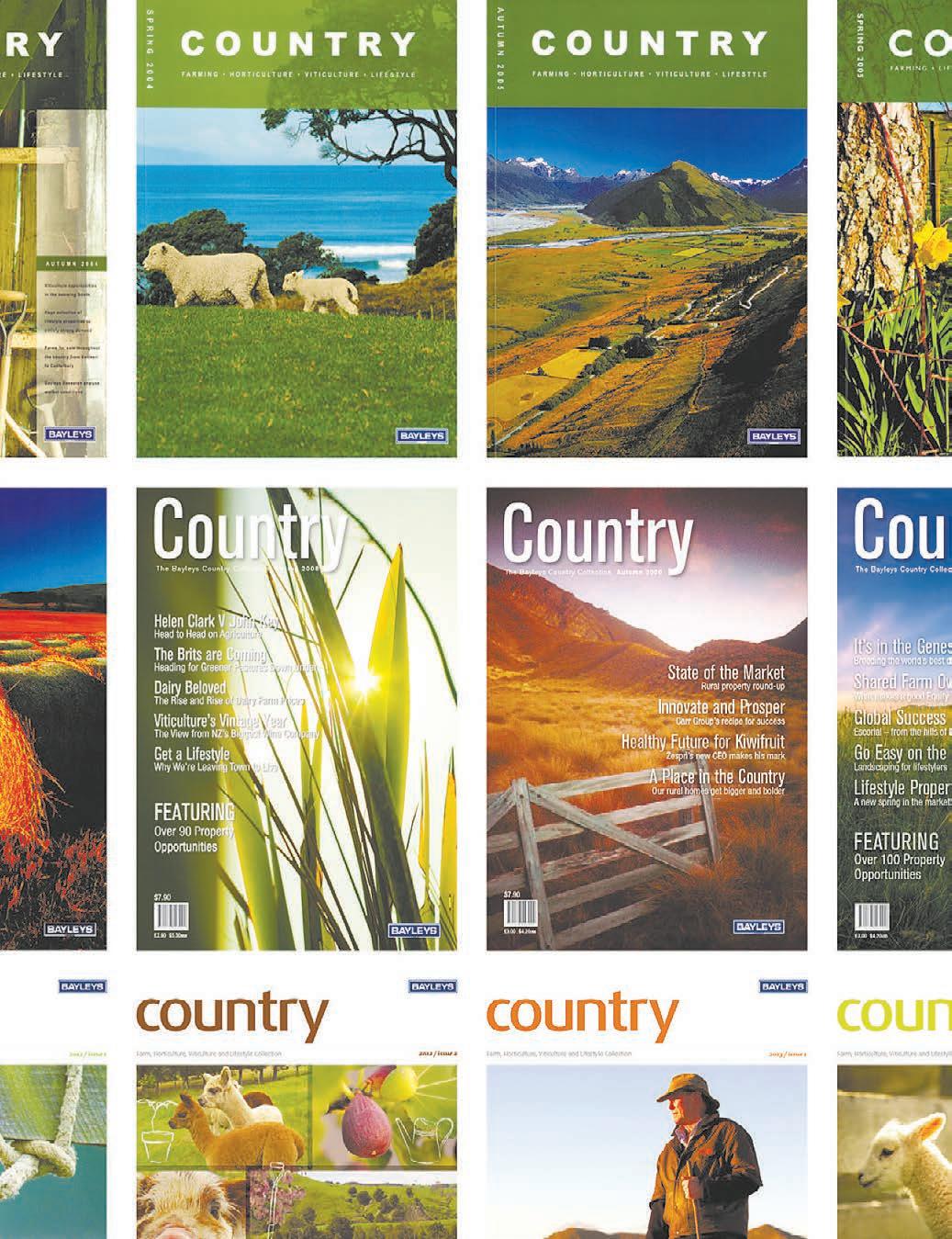




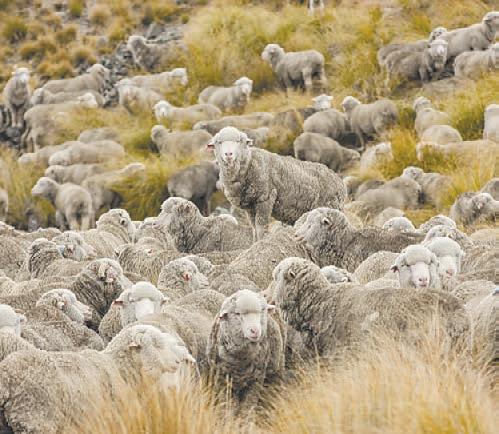

• International marketing governance role
• Highly innovative value chain organisation
• World-leading ethical brand
The N ew Zealand M erino Company (NZM) is an integrated sales marketing and innovation company focused on transforming N ew Zealand ’s sheep industr y It is one of the world ’s leading ethical wool companies and through its ZQ and ZQ RX brands sells wool to a global net work of brand par tners and value chain par tners
The NZM B oard is looking to endorse the nomination of t wo director candidates for a three-year term appointment by the shareholders at the upcoming Annual G eneral M eeting on 1 N ovember 2024 These appointments will collectively bring a combination of the following skills:
Previous senior executive experience in a tex tile sector supply chain business
• A deep understanding of the demand side of these businesses , including the wool value chain
• A background in apparel fashion brands and an understanding of this in the retail contex t
• E xper tise in the trade and consumer aspects of marketing
• Previous international business development experience and net works
Previous board experience, or experience interacting with boards
• Primar y sector knowledge and credibilit y with the grower communit y
This is a highly commit ted board, individuals with a positive and collaborative approach and a passion for the primar y sector will fit the culture well
To apply on a confidential basis please send your cover let ter and CV to cv@seqelpar tners com quoting reference number
1 018 , and/or call James Sleigh or Kirsten H enderson on 09 3 58 740 0 for a confidential discussion
Applications close on Sunday 14 July

• Offering governance and leadership.
• Opportunity to experience strategy within a red meat sector organisation.
• Rewarding role within a small team.
About Ovis Management Ltd (OML):
We are a non-profit organisation promoting control of sheep measles (C.ovis). We aim to reduce the risk that sheep measles poses for farmers, due to infected sheep and goats.
The role:
OML has an Associate Director position available commencing at the Annual Meeting in September 2024, for a term of 2 years. The purpose of this position is to offer experience in both governance and leadership. The role offers a future leader an opportunity to experience strategy and governance from within a Red Meat Sector organisation. All prospective applicants must be involved in the red meat sector (either side of the farm gate) and committed to furthering this area of the agricultural economy, be a credible and respected leader (or future leader) in the industry, have the highest levels of integrity, be collaborative in nature, possess sound judgement, and be innovative and strategic in their thinking.
About you:
• Have a strong enthusiasm for the red meat industry.
• Are dedicated to strengthening your leadership abilities and securing a place in the broader meat industry.
• Uphold the highest of ethical standards and behaviours.
• Be independent in thinking; be prepared to challenge and be challenged.
• Be innovative and value continuous improvement and responsiveness to the sector’s challenges and opportunities.
• Be an effective, persuasive, and respectful communicator.
• Be a role model for the values of the organisation.
The commitment needed will be two days a year on average. It is intended that the Associate Director will attend the Red Meat Sector Conference as well as any other conferences or meetings that may arise, within reason. This is an unpaid position however all expenses associated with this role will be covered.
To apply, please email your CV and a cover letter to Project Manager Michelle Simpson at michelle.simpson@mia.co.nz
For further information on this opportunity, please email Chairman Andrew Morrison at beak.lisa@gmail.com or call 027 664 4620.
Find out more about us at www.sheepmeasles.co.nz Applications close 7th July 2024.



Be part of providing solutions to the New Zealand dairy industry
DTT is a not-for-profit organisation with a strong commitment to servicing Taranaki and the New Zealand dairy industry and now operates over 408 effective hectares, milking 1300 cows, and employs 18 people. In anyone’s language, that’s a big investment in research, innovation and dairying in the region.
The role of General Manager is an investment in the future of the organisation, the farms, the team, the region and the industry, all of whom ultimately benefit from the work of the Trust. With a mission to provide answers and solutions to current dairy farming issues, this role reports to the DTT Board Chair and drives all research and operational performance.
The successful applicant will be involved with the development of strategic direction, leadership, research management and reporting. They will oversee the operational performance of the four farms, liaise with the science community, write proposals for research funding, promote and support the work of the Trust, set and manage the budget. The General Manager works closely alongside the Science Manager, Farm Operations Manager and Administration Manager.
This role has a very diverse skill set. If you take a look at the position description you’ll see that strong leadership, a high level of organisation, an excellent understanding of scientific protocols, commercial acumen, ability to influence, strong decision making skills and the ability to cope with pressure are amongst a long list of the professional and personal attributes required by the successful applicant. If you have some or all of the skills outlined we encourage you to apply. There is scope for the right person to develop and expand their skills within the role.
People management is an essential part of the role. At DTT, there is a ‘One Team’ philosophy. You will be working with a range of people every day; the farm and science team, science community, dairy industry contractors and stakeholders. The new leader will embrace these values and will find this role diverse and exciting.
To find out more check out www.dairytrusttaranaki.co.nz and to receive a copy of the job description or apply, reach out to nick@no8hr.com or call 07 870 4901.







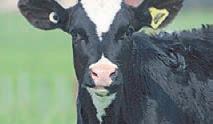






ROUND BALES – 12 equivalent. $65 +GST. North Waikato. Phone 021 0833 1763.
8512
DOGS FOR SALE HEADING DOG, EXCELLENT working strain. 11-monthsold. Fully broken in. Satisfaction guaranteed $2500 incl GST. Phone Dave 027 450 6095.
DOGS WANTED
DOG FOR SHEEP and cattle use. Under command. Prefer heading dog. North Waikato. Phone 021 0833 1763.
NZ KELP. FRESH, wild ocean harvested giant kelp. The world’s richest source of natural iodine. Dried and milled for use in agriculture and horticulture. Growth promotant / stock health food. As seen on Country Calendar. Orders to: 03 322 6115 or info@nzkelp.co.nz
FOR ONLY $3.30 + gst per word you can book a word only ad in Farmers Weekly Classifieds. Phone 0800 85 25 80.
HIGH PRESSURE WATER PUMPS, suitable on high headlifts. Low energy usage for single/3-phase motors, waterwheel and turbine drives. Low maintenance costs and easy to service. Enquiries phone 04 526 4415, email sales@hydra-cell.co.nz




that varying colours of paints appeared on the bird’s beaks and claws.
By analysing these paint residues it was determined that 98% of the magpies had been killed by impact with trucks, while only 2% were killed by an impact with a car.
The NZTA then hired an Ornithological Behaviorist to determine if there was a cause for the disproportionate percentages of truck kills versus car kills. He very quickly concluded the cause: When magpies eat roadkill, they always have a look-out in a nearby tree to warn of impending danger.
They discovered that while all the lookout birds could shout “Cah”, not a single one could shout “Truck.”

FARM MAPPING
PLAN YOUR DAY and simplify compliance with an up-to-date farm map – visit farmmapping.co.nz for a free quote.
FARM SITTING
EX-FARMER AVAILABLE for farm sitting. Experienced. Feral goats and cattle also mustered. Price negotiable. Phone Dave 027 450 6095.
GOATS WANTED
GOATS WANTED. All weights. All breeds. Prompt service. Payment on pick up. My on farm prices will not be beaten. Phone David Hutchings 07 895 8845 or 0274 519 249. Feral goats mustered on a 50/50 share basis.
WILTSHIRES-ARVIDSON. Self shearing sheep. No1 for Facial Eczema. David 027 2771 556.
RAMS FOR SALE SITUATIONS VACANT
COUPLE TO CARETAKE a 95,000 acre property located in south west QLD. Must be confident with machinery operation and maintenance and care of stock being cattle, sheep, goats and horses with a HR truck licence or able to get it. Long term job. Wage negotiable on experience. Start ASAP. Contact for more information 04 1672 0937. References and a resume email floradowns@bigpond. com
WANTED TO BUY
SAWN SHED TIMBER including Black Maire. Matai, Totara and Rimu etc. Also buying salvaged native logs. Phone Richard Uren. NZ Native Timber Supplies. Phone 027 688 2954.
BOOK AN AD. For only $3.30 + gst per word you can book a word only ad in Farmers Weekly Classifieds section. Phone 0800 85 25 80 to book in or email wordads@agrihq.co.nz
Advertise with us
Call 0800 85 25 80 wordads@agrihq.co.nz





For traders and finishers at least, the low buy-in price and improved spring forecast schedule offer some positive elements to this season’s market dynamic.
 Alex Coddington MARKETS Livestock
Alex Coddington MARKETS Livestock
IT’S not always easy for sheep and beef farmers to focus on the positives when the biggest factors affecting their bottom line are beyond their control.
In recent years, a long list of contributing factors has seen input costs skyrocket. Last year, on-farm inflation was over 16%, the highest it has ever been since the 1980s. Meanwhile, output returns have struggled against strong headwinds. Despite this, the low buy-in price and improved spring forecast schedule offer some positive elements to this season’s market dynamic for traders and finishers.
Unfortunately, the dire bottom lines for farms in recent years have already altered land use. The declining beef supply and plummeting national flock have become a problem for processors.
For lamb, further capacity shake-ups are now necessary for processing a very low remaining kill through winter.
Although operating costs are still high, the cost of buying stock has been relatively low, especially store lambs. Drier than normal conditions in our main sheepproducing regions have doubled down on restricting demand.
The average weights of lambs
through Feilding and Stortford Lodge show that hill-country lambs have had a tough run this year, while a general lack of feed heading into winter has kept the store market in check.
The average weight for male lambs through the Feilding saleyards in May was the lowest it’s been since 2008 at 32.6kg. Similarly, ewe lambs and weights for lambs through Stortford Lodge are all below the five-year average. It’s not surprising that the value of store lambs has failed to lift in tandem with recent schedule gains.
Male lambs purchased this month for $2.60/kg are expected to generate the highest margin percentage in the past five years.
Farmgate returns for lamb are still far from generating excitement in farming them.
Despite the below-average forecast spring lamb return, the function of a low buy-in price does reflect better confidence in an improved margin for traders this year.
The current buy-in price for store lambs relative to the predicted spring schedule has fallen from 52.1% last year in the North Island to 37.3% – a marginal
change of almost 15%. This is the lowest this figure has been since 2013 when most of the North Island was in severe drought.
Last year, male lambs were bought in April at an average price of $3.45/kg, anticipating a $9/ kg spring schedule. For the first time in 10 years, the spring price turned out to be less than it was in April at $7/kg.
This year, the evident lack of prime lambs has warranted expectations for processors to continue to lift the schedule to just under $7/kg come spring. This means that male lambs purchased this month for $2.60/kg are expected to generate the highest margin percentage in the past five years.
There is a similar dynamic in play for beef, especially in the South Island, where feed restrictions are restricting the ability to trade through winter.
The New Zealand steer and heifer slaughter statistics show from October to mid-May, 816,554 head have been processed, an 11% increase on the five-year average.
Now that we’ve reached the off-season, prime numbers are especially tight. The current spring forecast price for prime beef in September/October this year in the North Island is close to 40c/kg above last year’s spring price. In the South Island, the predicted schedule for spring could be 20-30c/kg above last year.

In contrast, the current buy-in price for R2 steers and heifers is roughly 5c/kg below year-ago levels in the North Island and 60c/kg less in the South. This would make the current R2 steer and heifer price only 47% of the spring schedule, compared to 52%
last year. In the South Island, the current R2 steer and heifer price is only 43% of the predicted returns in spring, below the five-year average of 45%.
Based on these forecasts, and much like with lamb, there are opportunities to be had.
It was a positive sale at Stortford Lodge on Wednesday as better quality coincided with increased throughput and demand, both local and from Manawatū. It was the largest yarding of store lambs for the year at 8000-head and this meant some lines over 300-head were available. Better males in these numbers were the focus for Manawatū buyers aiming for unit-loads. There was a wide variation in per kilogram returns based on quality, but it was the best result for male lambs this season at 32.2kg and $2.69/kg on average. Ewe lamb averages added another 2kg and 15c/kg on top of males.
R2 Hereford-Friesian heifers, 390-473kg
R1 Angus steers, 264-313kg
Prime beef, dairy-beef steers, 603-769kg 3.21-3.34
Boner Friesian cows, 433-529kg
R2 Hereford-Friesian heifers, 336-432kg
R2 dairy-beef, Friesian heifers, 388-472kg
Aut-born yearling dairy-beef steers, 358-371kg
3.06-3.15
2.81-3.02
3.11-3.21
Aut-born yearling Friesian bulls, 331-362kg 3.32-3.34
R1 Hereford-Friesian, beef-cross steers, 185-225kg
R1 Hereford-Friesian, beef-cross bulls, 146-190kg
500-560
R1 dairy-beef, beef-cross heifers, 177-225kg 650-730
R1 dairy-beef, beef-cross heifers, 212-287kg
Prime steers, 500-698kg
Prime heifers, 433-577kg
R4-R8 Angus cows, VIC Angus , 604-670kg
R2 Angus, Simmental, Angus-Simmental steers, 358-439kg
790-1000
2.99-3.24
2.91-3.11
Boner Friesian, crossbred cows, 445-667kg 2.08-2.38 Frankton | June 12 | 312 cattle
R2 Hereford-Friesian, beef-cross steers, 342-395kg
R2 heifers, 341-427kg
R1 Hereford, beef-cross steers, 175-254kg
R1 Friesian, Friesian-cross bulls, 195-266kg
R1 heifers, 170-262kg
Aut-born weaner Friesian bulls, 106-120kg
Prime dairy-beef heifers, 455-655kg
dairy
Feilding | June 7 | 977 cattle, 14,784 sheep
R1 Angus, Angus-Hereford bulls, 251-295kg
R1 Angus-cross heifers, 160-192kg
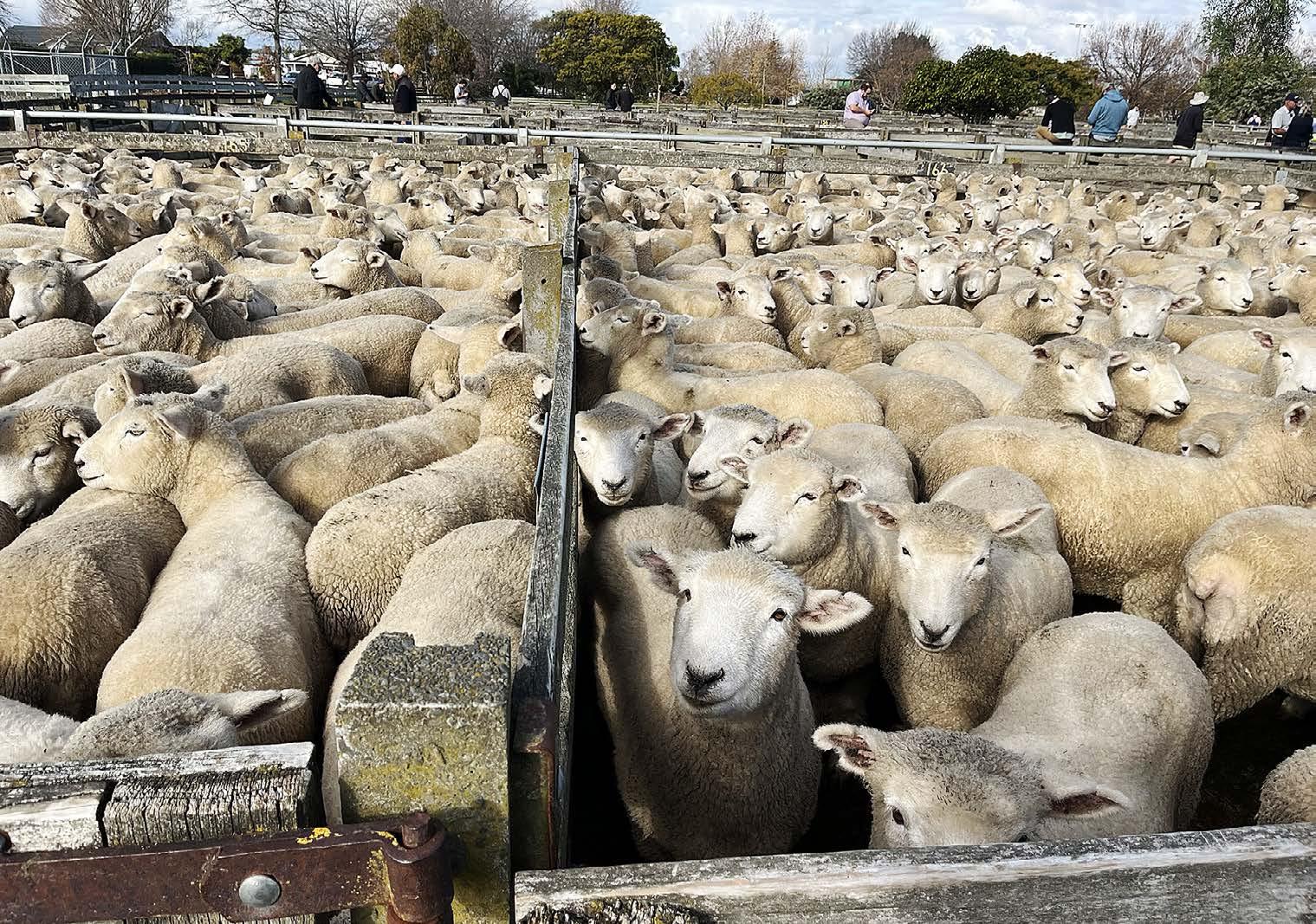
Feilding | June 10 | 209 cattle, 3145 sheep
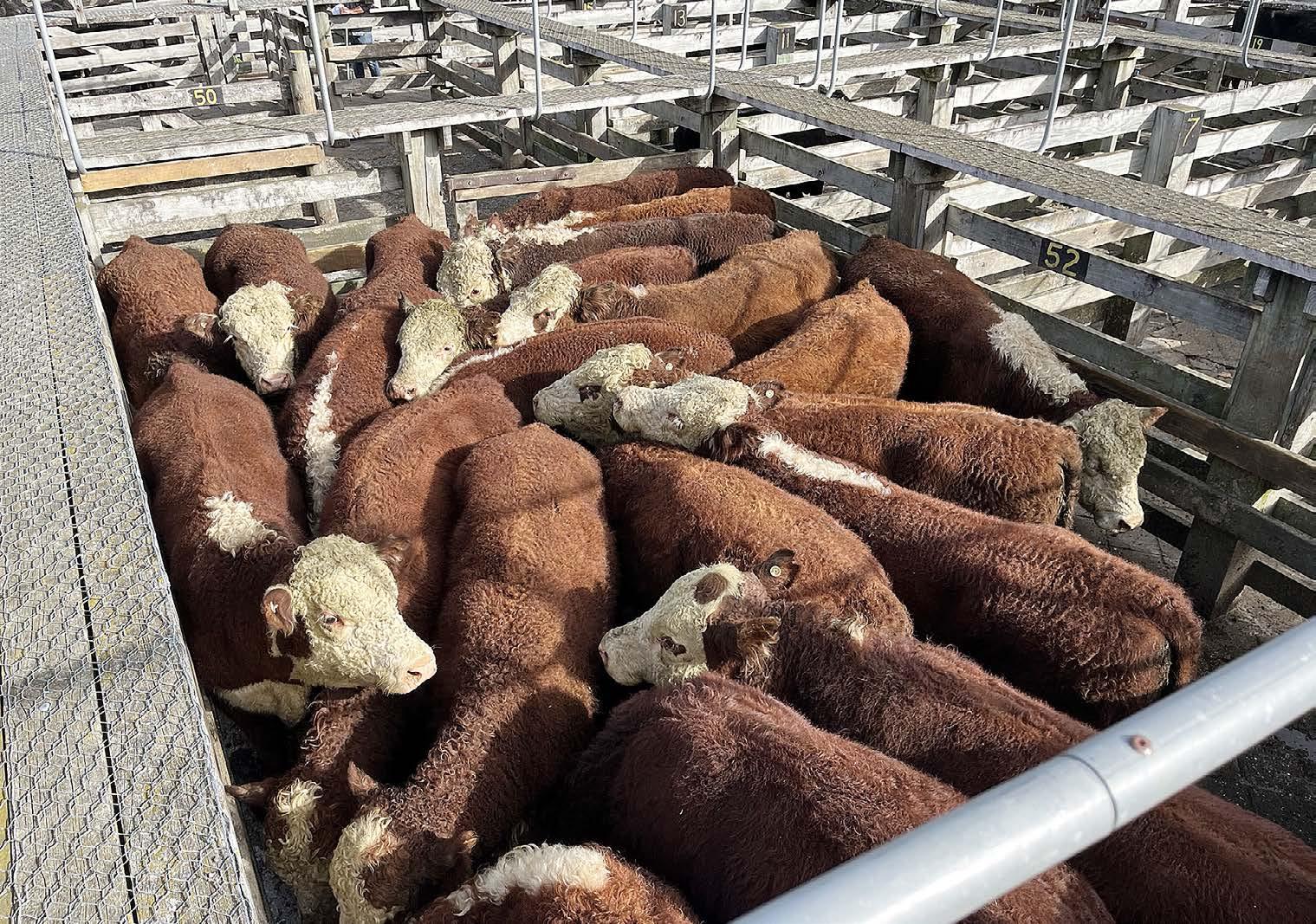
HEREFORD ADD COLOUR: Angus was still the dominant breed at Stortford Lodge but the addition of Hereford from Wairoa, and a few Simmental and Speckle Park-dairy options, created some variation in colour. These R2 Hereford bulls averaged 403kg and made $1390, $3.45/kg.
R2 exotic steers, 381-396kg
R2 Hereford-Friesian steers,
R2 Friesian bulls, 388-438kg
R2 Angus heifers, 269-322kg
R2 dairy-beef heifers, 360kg average
R1 Angus-cross steers, 137-175kg
R1 dairy-beef steers, 175kg average
R1 Friesian bulls, 166-249kg
Feeder calves | June 11 Frankton | June 11 |



























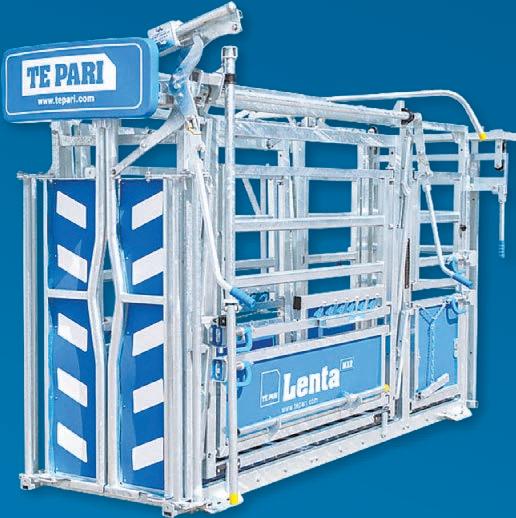







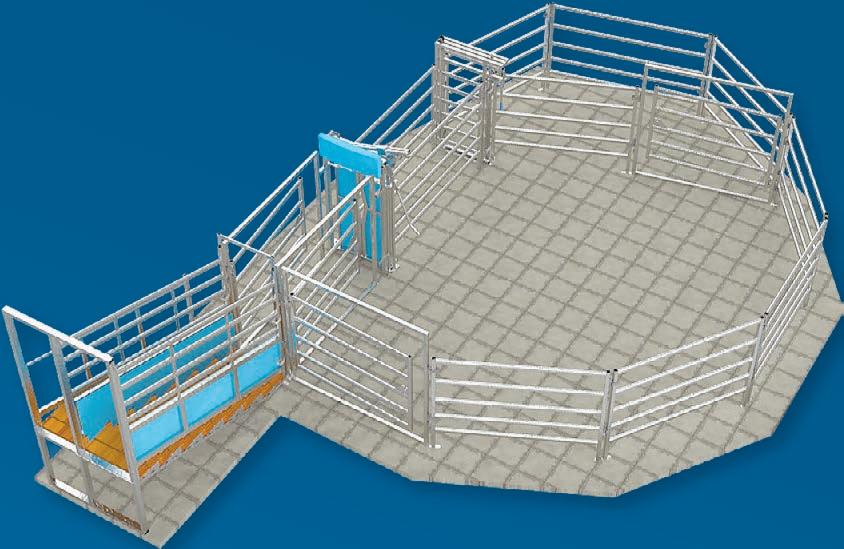



 Philip Duncan NEWS Weather
Philip Duncan NEWS Weather
MOVE over high pressure, low pressure is in the driver’s seat now.
For the first time in 2024, low pressure is dominating New Zealand for an entire week, bringing a variety of weather and a higher chance of cloudier, wetter conditions.
The large and slow nature of this low pressure zone means the weather won’t always be severe or majorly interesting – but the setup is repetitive, much like when we have a high that is stalled over us.
Sometimes the easiest way to think of low pressure is to picture it as the creator, not the storm itself. Having low pressure parked over us doesn’t equal a storm – but it means rain events and instability will be part of the forecast for a week, normally reserved for only as a low passes by, or an active cold front comes in.
With the “creator” parked over the Tasman Sea for a week it will send various fronts, rain bands and showers into the NZ area and
it’s these parts that can create the severe weather. Think of the low as a machine spitting out various daily weather and each day there will be a slight shift to the set-up.
Frosty weather has been back in recent weeks after taking a long time to get going for some.
This change is well overdue. So far, 2024 has been leaning drier than average for many places and while autumn and winter have seen some wet weather return there are several regions still in a rainfall deficit, so this will be helpful – but our mountains and ranges mean not everyone will get big totals.
If you look further into the week the weather maps are messy, with most modelling expecting this low to break apart and gradually lose energy. With high pressure expected south of the country over the week this may also shut down the colder southerly flow, meaning many regions may be milder than usual (please note that doesn’t equal being “warm”, but may mean

the overnight lows aren’t so cold).
Speaking of cold, frosty weather has been back in recent weeks after taking a long time to get going for some. The South Island has been more exposed but seeing overnight lows back to -5 to -9degC recently reminded me of what used to be normal weather a couple decades ago.
New Zealand’s location on Earth means one large high can dredge up sub-Antarctic cold southerlies
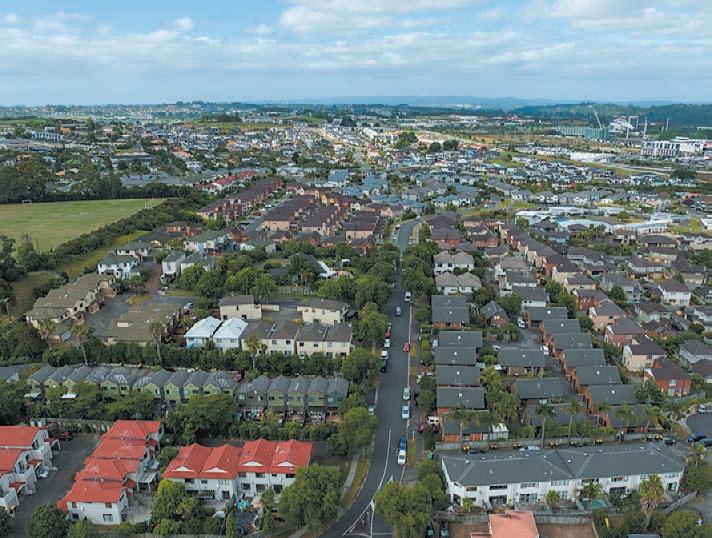
as it moves in and then pull down warm subtropical northerlies as it exits. So NZ can always buck the trend thanks to a couple of misplaced air pressure zones, turning a month from colder than normal to warmer than normal. It’s why sometimes late autumn can be colder than the depths of winter. It’s all about those high pressure zones – and for now, they’re taking a break from dominating our weather.

Highlights this week
• Low pressure to dominate the Tasman Sea area for over a week
• Rain and showers across NZ, mostly coming in from the west and north of both main islands
• Temperatures may be above normal (perhaps more noticeable overnight)












